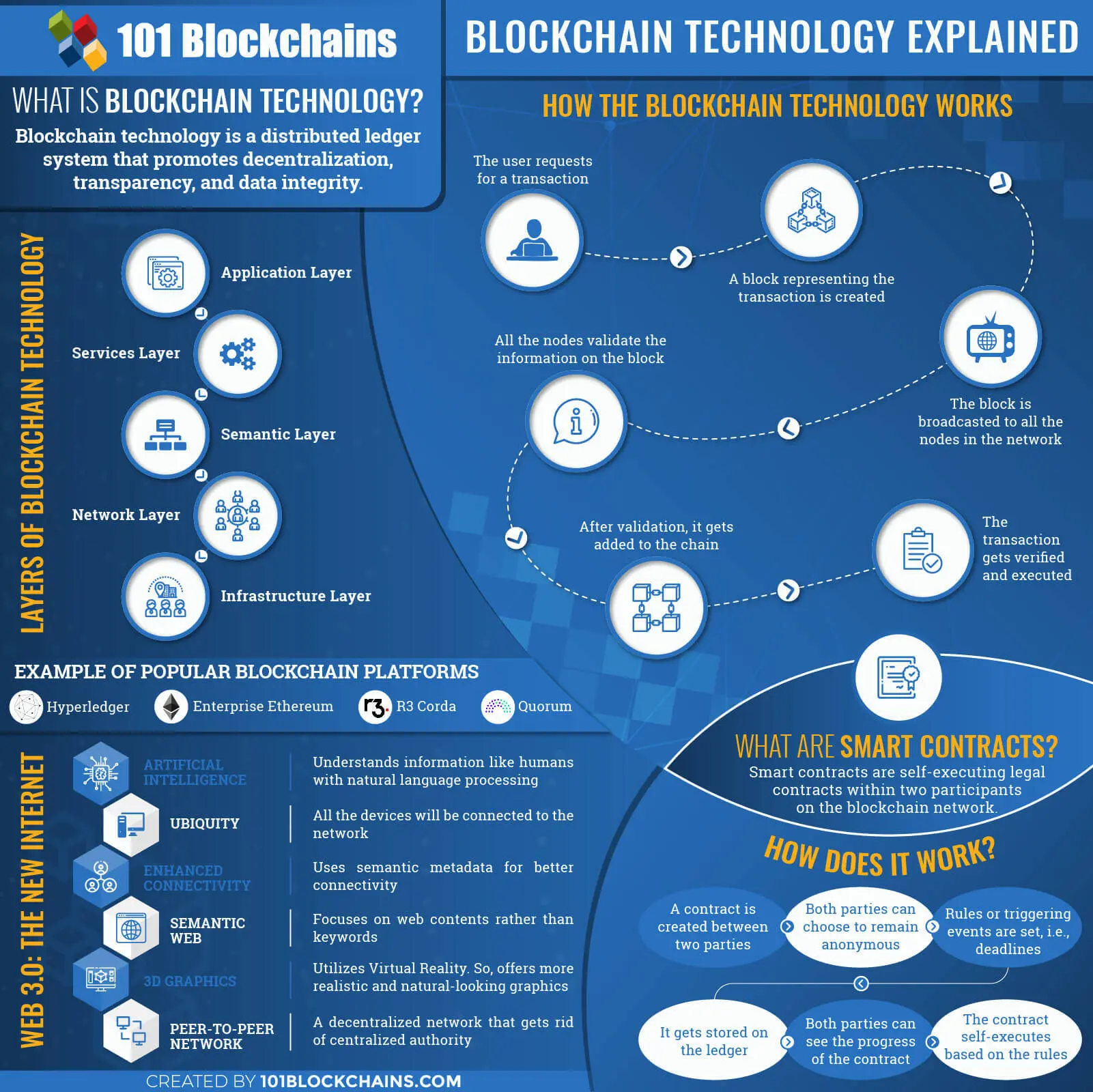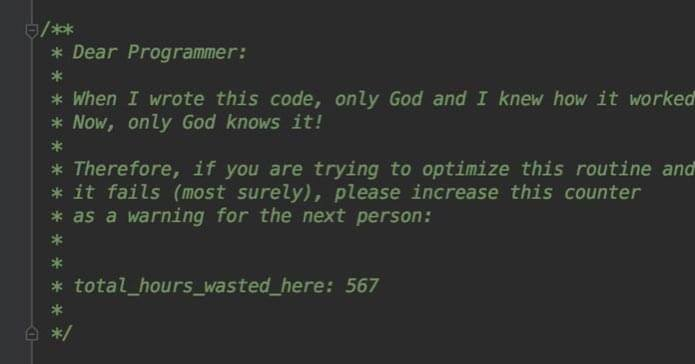
manhsteven
Posts
-
OOps I don't even recognize myself!!! -
Welcome to your brand new Web3 Developers Community forum!Welcome to your brand new Web3 Developers Community forum!
The purpose of this group is to provide a place for developers who want to learn about decentralized applications (DApps) and smart contract development. If you want to know what DApps are, how they work or how smart contract works, then this group is for you. We try our best to help developers make progress on their projects by sharing what we know and asking questions to each other on how we can solve problems together!
WEB3 IS THE FUTURE!
Unlike every other language like Javascript or Python, there are NOT 10000’s resources available online for Web3
We face a lot of issues that not have on forum and stackoverflow.
With 40k developers existing on Web3 compared to 10m developers on Web2, we have a huge opportunity to be at the top 5% Pioneers.Thank you for being here and sharing your knowledge with everyone around you, your contribution will help the Web3 community become stronger than ever
I need more quality posts on the Forum and will give Retricts to spam posts!
Thank you for your support ️
️ ️
️ ️
️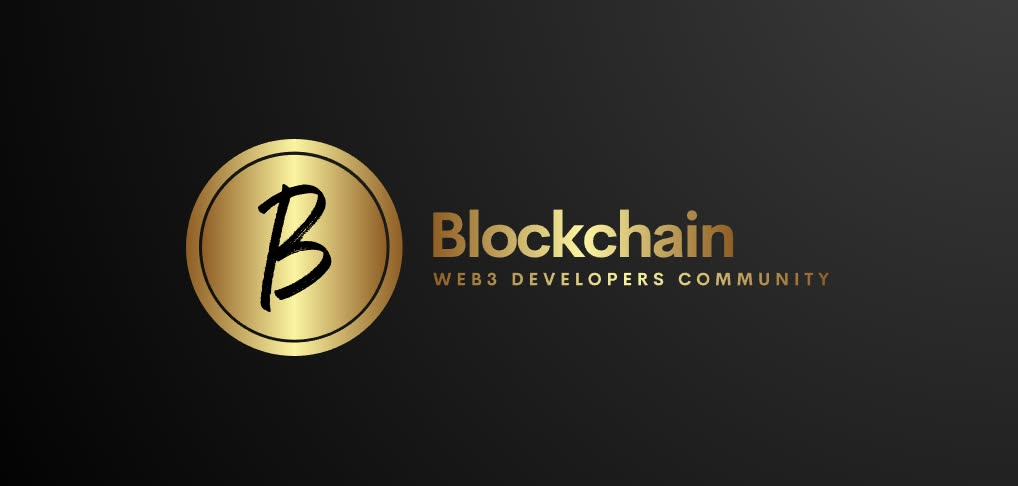
-
What is Web5?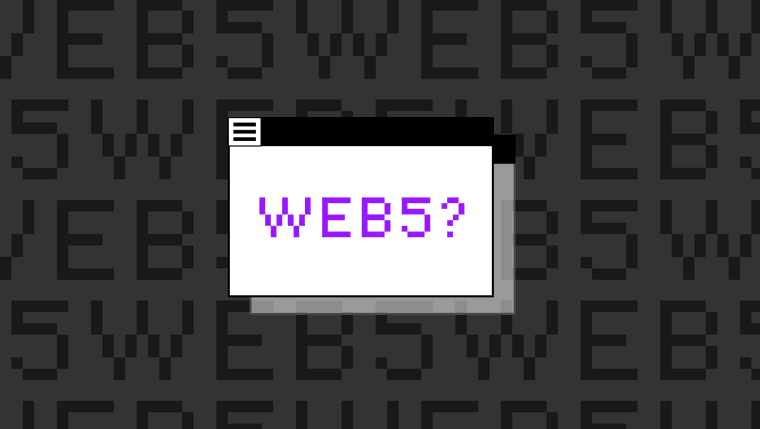
Web 5 is a decentralized platform that provides a new identity layer for the web to enable decentralized apps and protocols.
In the current web model, users do not own their data or identity. They are given accounts by companies and their data is held captive in app silos. To create a new class of decentralized apps and protocols that put individuals at the center, we must empower them with self-owned identity and restore control over their data.
Components of Web 5
There are three main pillars of the decentralized web platform, all of which are based on open standards.
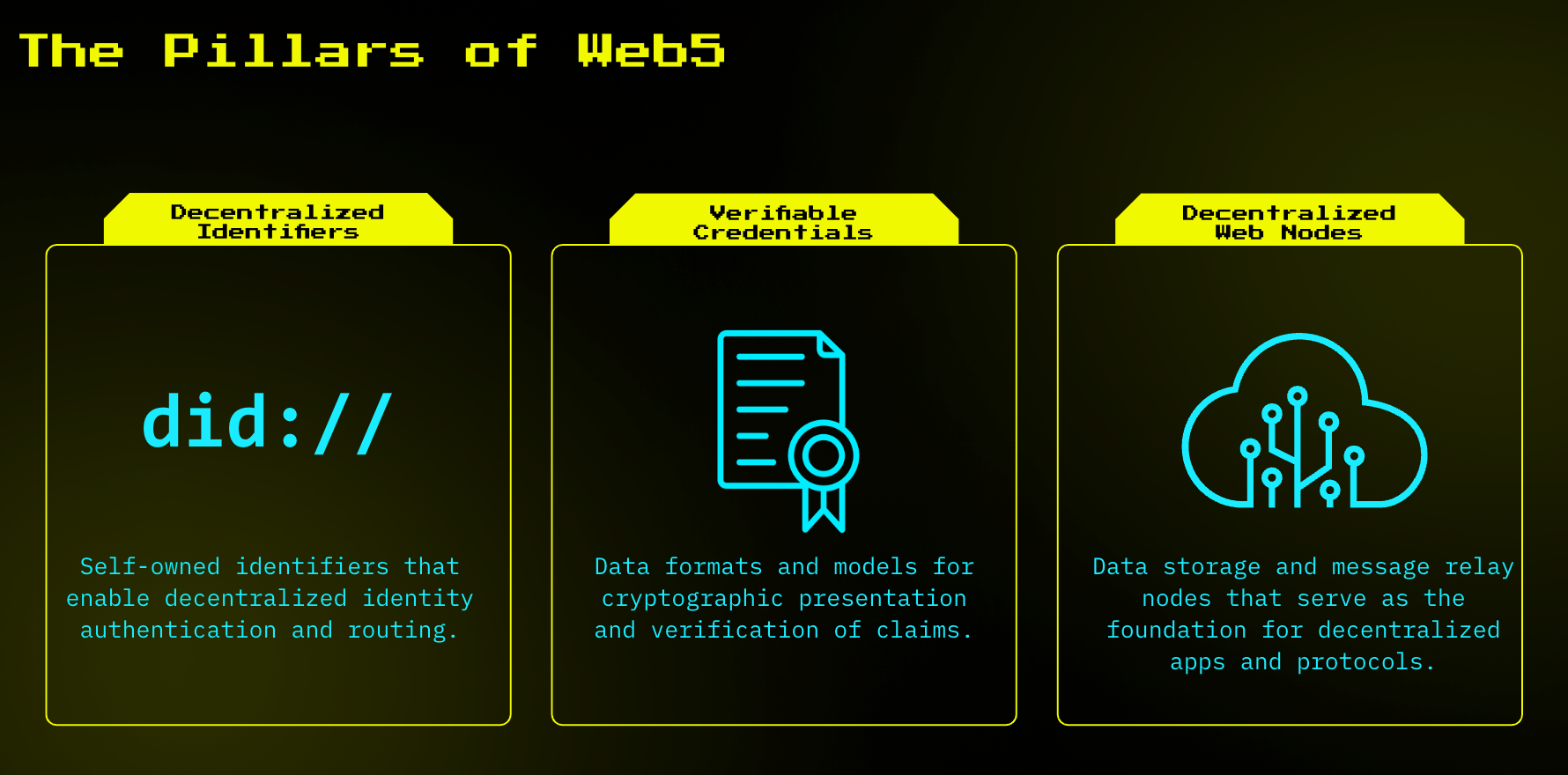
Decentralized Identifiers
The identifiers we know and use today are owned by the government, a company, an organization, or some other intermediary. For example, our email addresses and social media handles are identifiers associated with us but are owned and controlled by the service providers. These companies have the right to ban, disable, or delete these identifiers and we have little to no control over this.
So before we can realize truly decentralized applications, we need decentralized identifiers that users own and control. This removes the dependency on centralized entities to authenticate and represent us.
Decentralized Identifiers (DIDs) are a W3C standard. They have a standardized structure that essentially links to you and your information.

Verifiable Credentials
Verifiable Credentials are a fully ratified W3C standard that work hand in hand with Decentralized Identifiers to enable trustless interactions - meaning two parties do not need to trust one another to engage, but claims made about a DID subject can be verified.
For example, Alice needs to prove she has a bank account at Acme Bank. Acme Bank issues a cryptographically signed Verifiable Credential which would be stored in Alice’s identity wallet.
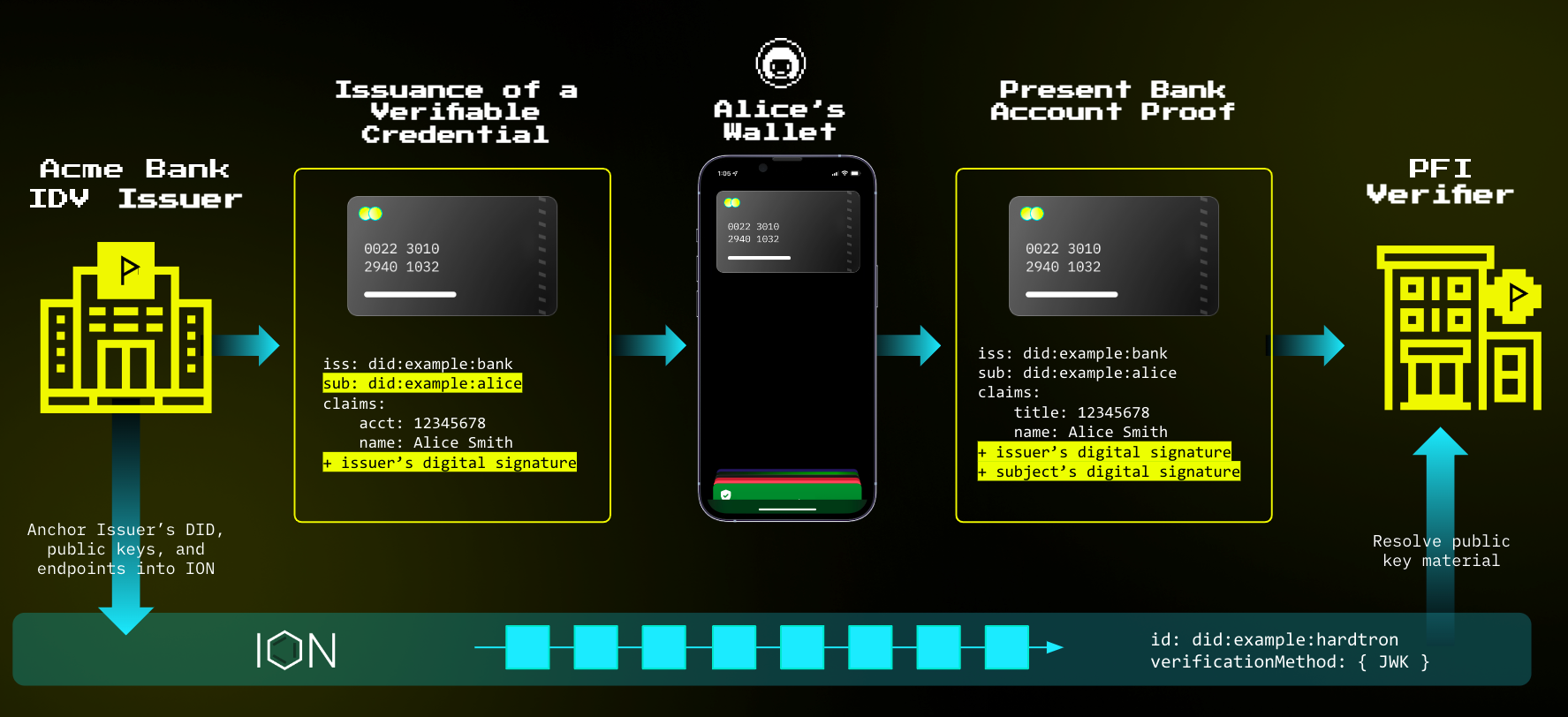
Decentralized Web Nodes
Your decentralized web nodes do not live on the blockchain. You can host your web nodes anywhere (your phone, computer, etc) and can replicate them across your devices and clouds and all data will be synced.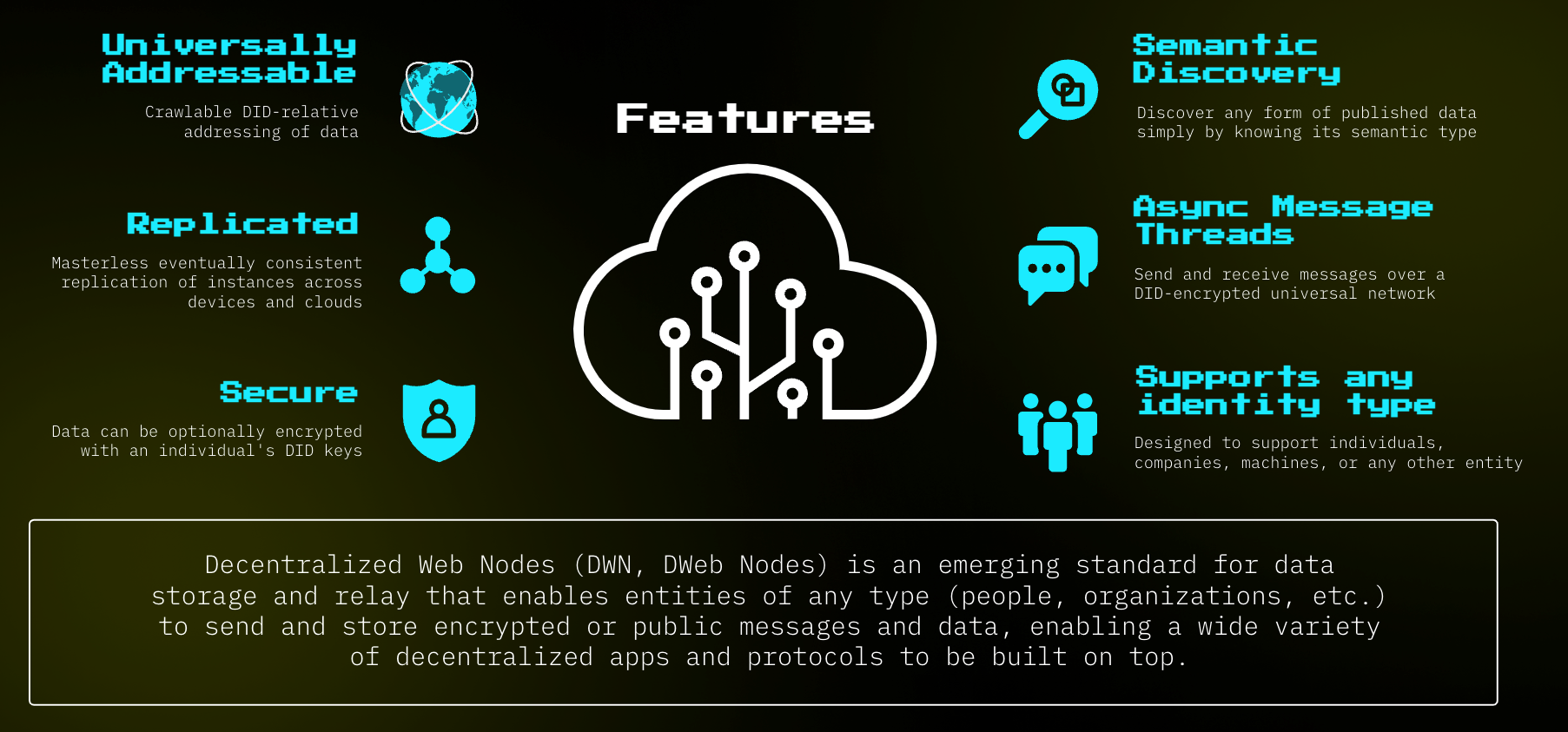
Identity Wallets
Obviously all of this is pretty complicated, especially for non-technical users. So we need a simplistic, easy to use interface that will allow people to access and manage their identity.
A well designed identity wallet would provide ways to manage the data stored in decentralized web nodes, the decentralized IDs and the context in which they should be used, verifiable credentials, and authorizations.
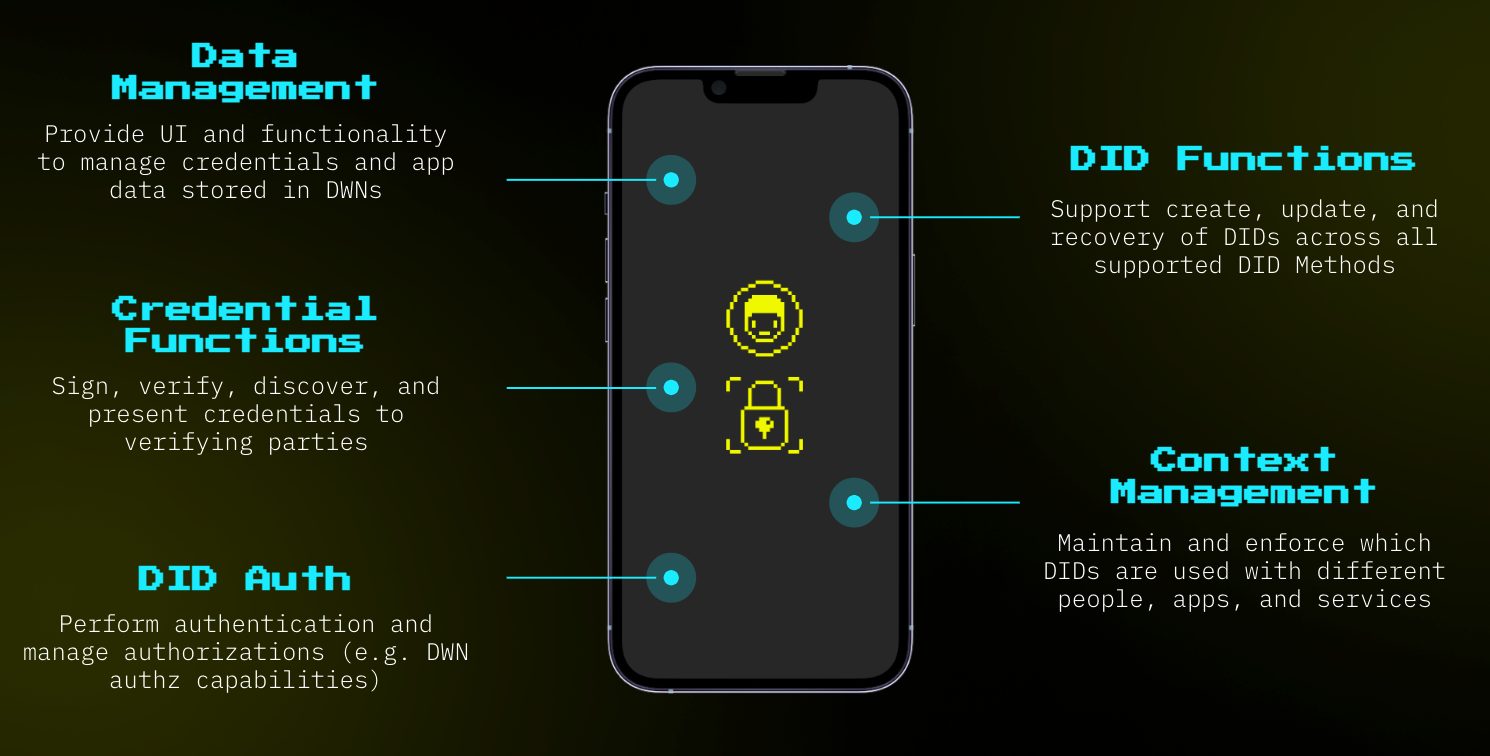
Decentralized Web Apps
Web 5 enables developers to build decentralized web applications (DWAs) on top of it and it’s all open source! You’re free to use it as your foundation and focus your attention on what you really care about, your app. Web5 brings to DWAs what cloud and application servers bring to enterprise apps. It does the hard part. It brings decentralization. By building your apps on top of Web 5, you get decentralization and identity and data management as part of the platform
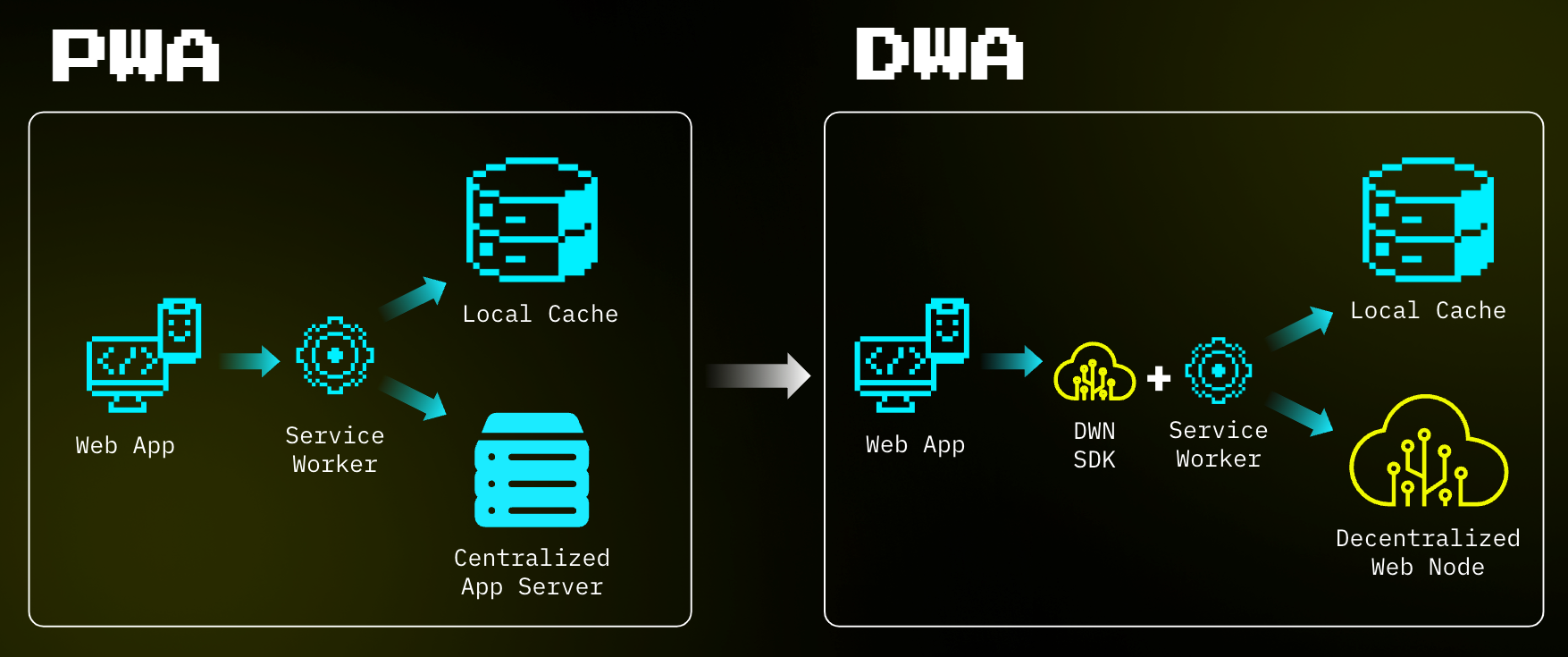
-
10 websites helps you to learn Web3 Development for FREE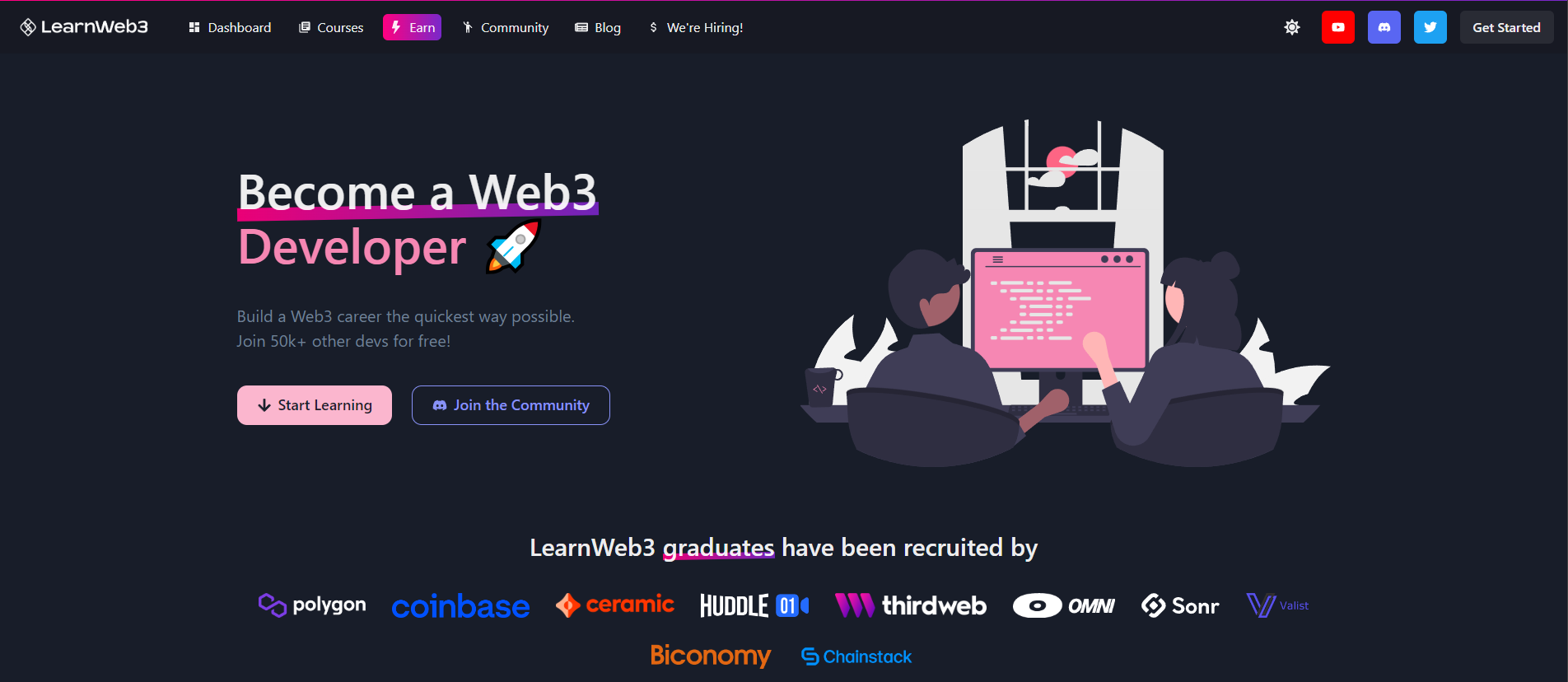
Hello community, today I am going to introduce my start to blockchain, websites that will help you become familiar and expert on Web3, but this process should take place day by day, you don’t can cram knowledge in 1 day, wish you success
• learnweb3.io
• useweb3.xyz
• AlchemyLearn
• buildspace.so
• metaschool.so
• cryptozombies.io
• questbookapp.xyz
• freecodecamp.org
• solidity-by-example
• ethernaut.openzeppelin.com -
Welcome 14800 members to 1 vast world of blockchain and web3Welcome 14800 members to 1 vast world of blockchain and web3
WEB3 IS THE FUTURE!
Unlike every other language like Javascript or Python, there are NOT 10000’s resources available online for Web3
We face a lot of issues that not have on forum and stackoverflow.
With 40k developers existing on Web3 compared to 10m developers on Web2, we have a huge opportunity to be at the top 5% Pioneers.
Web3 Developers Community on Facebook: https://www.facebook.com/groups/web3developerscommunity
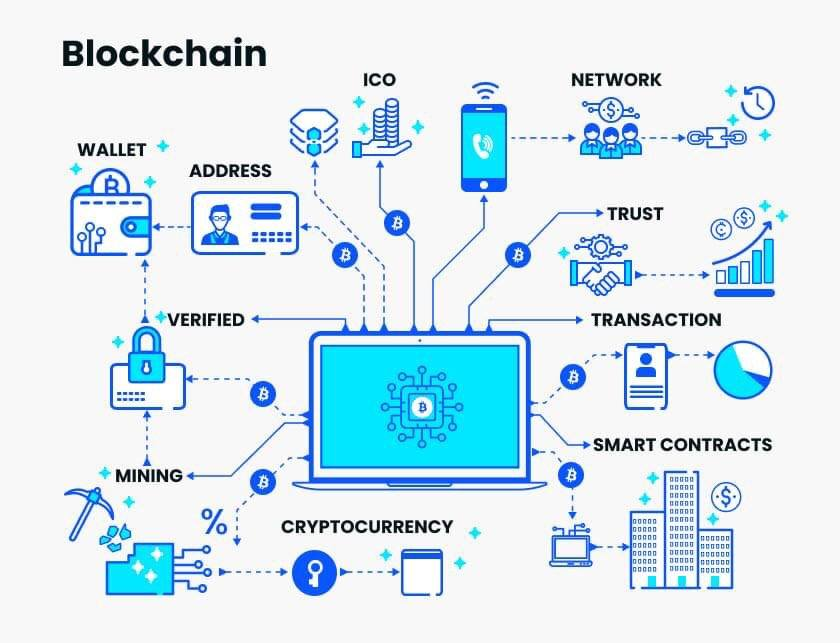
-
Harvard University is offering courses for FREE. Here are 7 courses you don't want to miss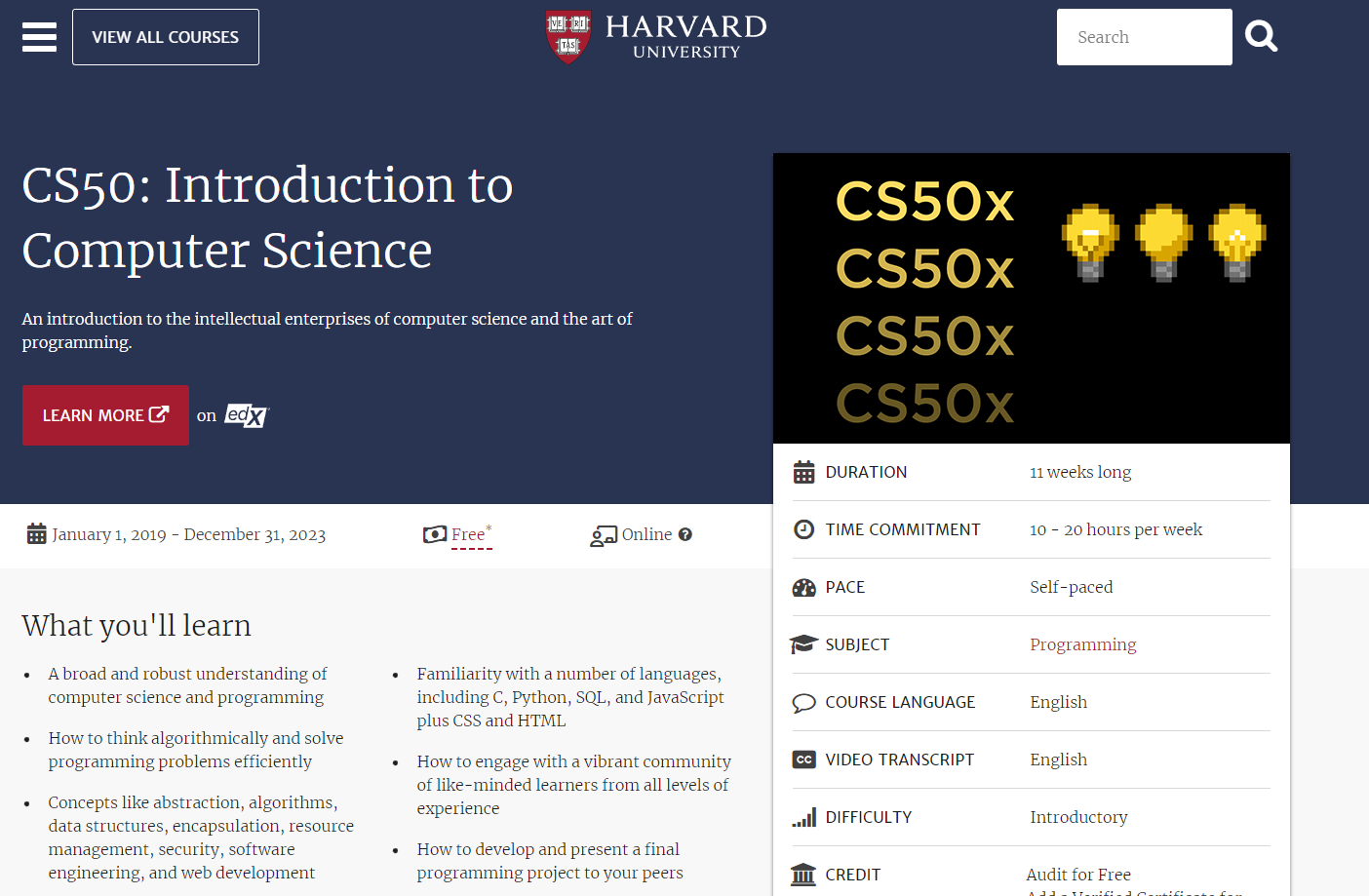
-
Introduction to Computer Science Want to get into CS? This is a good place to start. You’ll learn about all the fundamental concepts and prominent languages to get started into tech. http://pll.harvard.edu/course/cs50-introduction-computer-science
-
Introduction to Data Science with Python A must for anyone that wants to get into Data Science! Get hands-on experience with this course, and practice solve real-life data science challenges. http://pll.harvard.edu/course/introduction-data-science-python
-
Web Programming with Python and JavaScript Web development is wildly in-demand. With this free course, you’ll learn everything you need to get your foot in the door. From DB design, security and scalability. http://pll.harvard.edu/course/cs50s-web-programming-python-and-javascript
-
Introduction to Game Development If developing games sounds like a fun career to you then this Harvard course is a must. This course takes a hands-on approach to teaching with projects to boast your learning. http://pll.harvard.edu/course/cs50s-introduction-game-development
-
Understanding Technology No matter which field you decide to enter, understanding what happens under-the-hood will always be handy! This course explores hardware the internet, security, and more. http://pll.harvard.edu/course/cs50s-understanding-technology-0
-
Mobile App Development with React Native Almost every company has a mobile app which means this is another high-demand field. You’ll learn all the fundamentals of app development with this course.
http://pll.harvard.edu/course/cs50s-mobile-app-development-react-native -
Introduction to Artificial Intelligence with Python AI is the buzz word of the decade for good reason. See if this revolutionary field is for you with Harvard’s intro to AI course. http://pll.harvard.edu/course/cs50s-introduction-artificial-intelligence-python
-
-
Introduce about The Graph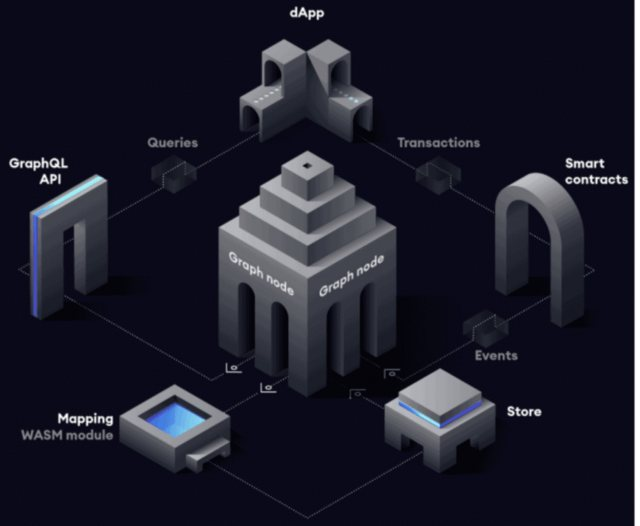
Graph is a decentralized query protocol and indexing service for the blockchain. It allows developers toeasily track events being emitted from smart contracts on various networks, and write custom data
transformation scripts, which are run in real time. The data is also made available through a simple GraphQL API which developers can then use to display things on their frontends.How it Works:
-
A dApp sends a transaction and some data gets stored in the smart contract.
-
This smart contract then emits one or more events.
-
Graph’s node keeps scanning Ethereum for new blocks and the data for your subgraph that these blocks may
contain. -
If the node finds an event you were looking for and defined in your subgraph, it runs the data
transformation scripts (mappings) you defined. The mapping is a WASM (Web assembly) module that creates or updates data Entities on the Graph Nodes in response to the event. -
We can query the Graph’s node for this data using the GraphQL Endpoint
(Referenced From The Graph’s website)
-
-
Mastercard reveals new set of standards for blockchain at Consensus 2023Raj Dhamodharan, Mastercard’s head of crypto, joins “CNBC Crypto World” to explain a new set of standards for blockchain technology the payments giant announced at Consensus 2023.
-
Web3 Developer Stack in 2023 - Let's start laying the foundation for you from today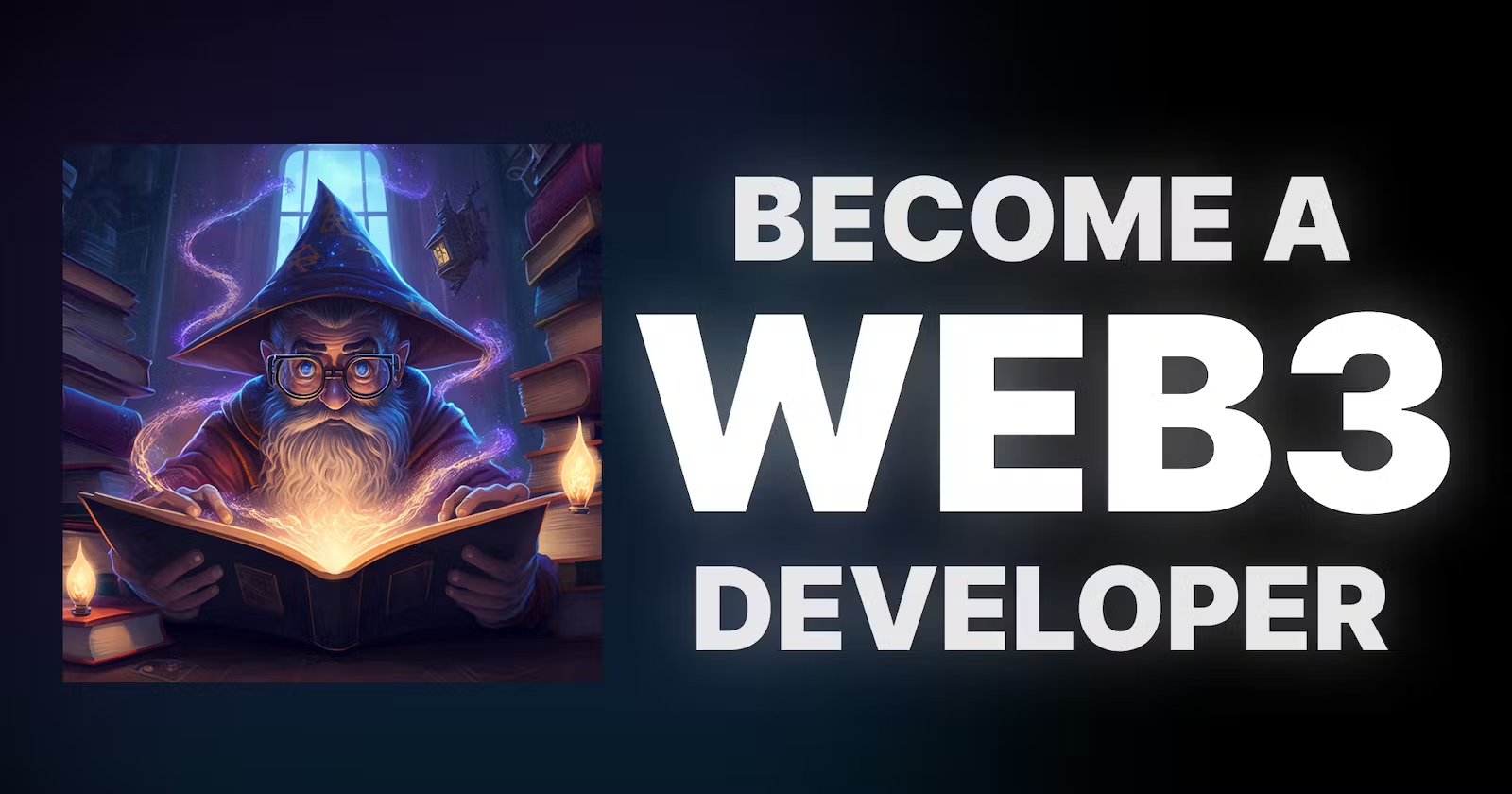
This is an opinionated guide to becoming a web3 developer in 2023.
I’ll outline the exact steps that I personally took to land a role as a developer relations engineer at thirdweb; a suite of developer tools for building in web3.
Unlike other roadmaps, I’m not going to give you 300 things to learn and get you stuck in tutorial hell. This is an actionable, sequence of technologies for you to learn, including the exact resources I found most helpful throughout my journey.
Let’s dive into it! Below is a preview of each layer of the stack we’ll be covering.
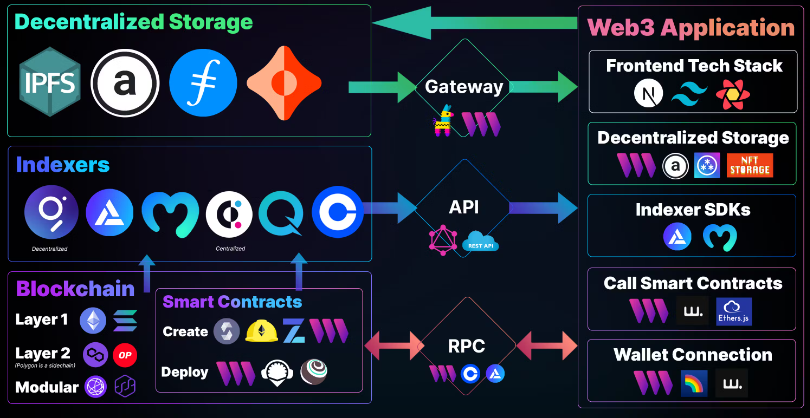
Important Disclaimer (READ THIS)
Consuming resources alone will never teach you how to become a developer.Every dev has to constantly fight their own battles on the journey to understanding how to code, and put together the pieces of the gigantic puzzle along the way.
As soon as you know how to START building, exit the roadmap and go at it alone. Just try to build something. It’s going to suck. And that’s the point!
Come back to the resources to fill in the gaps in your knowledge as you get stuck; learn what tools are available for you to use that solve your problems with the resources in this guide.
Every project you make will be better than the last, and you’ll soon be embarrassed by your old code.
DO NOT just consume these resources, they are only there to help point you in the right direction in a logical order as you actually build your own projects.
It’s not going to be easy, but it is worth it. Buckle up and let’s get started!
The Roadmap
We're going to cover a lot of topics in this roadmap, and I'll provide you with resources that I personally used to develop my understanding at each step of the way. Here's a quick preview of some of the tools we'll cover: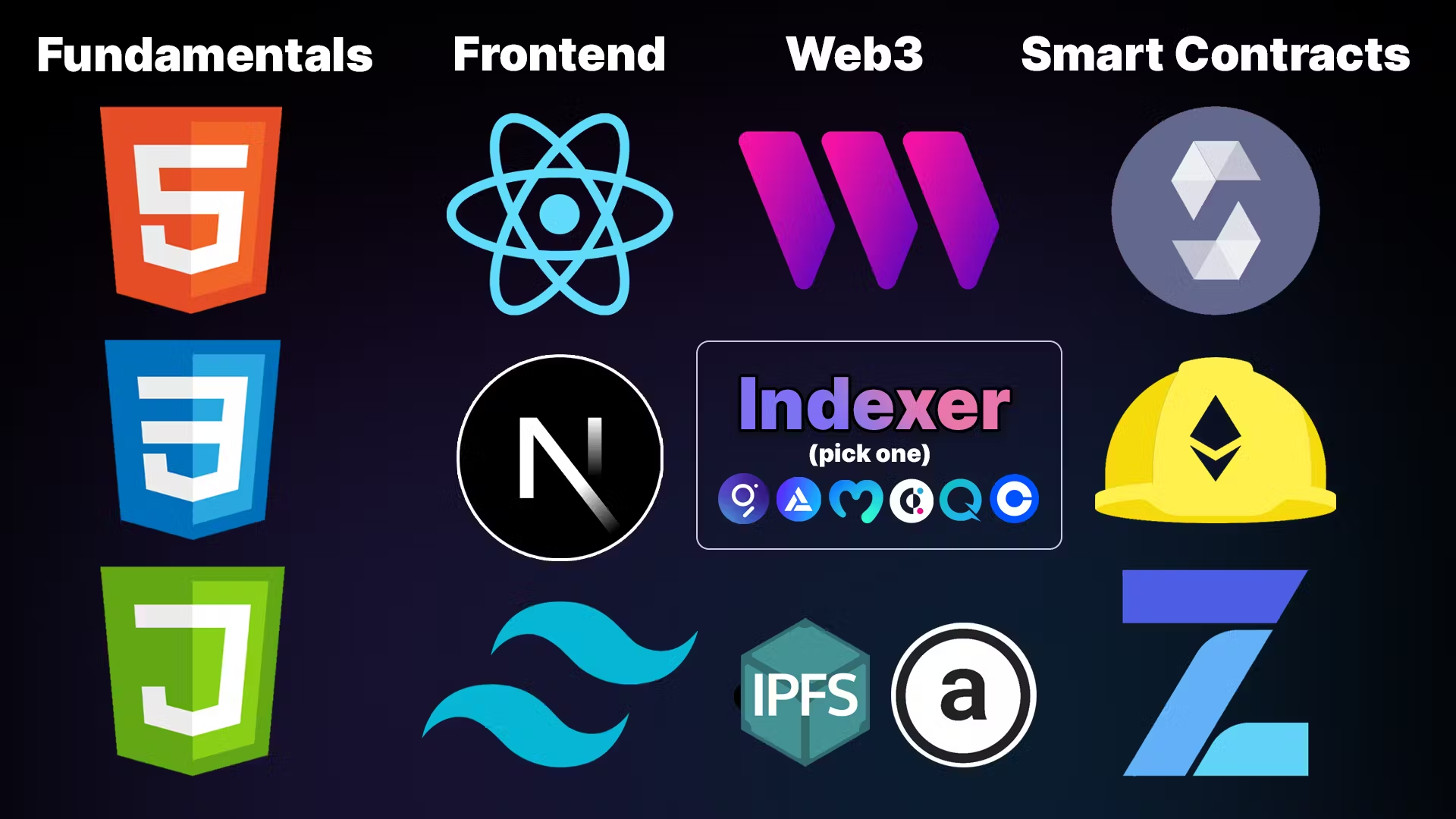
The Fundamentals: HTML & CSS
Every website consists of three things:
HTML: Structure of elements on the page
CSS: Style of elements on the page
JavaScript: Interactivity of elements on the page
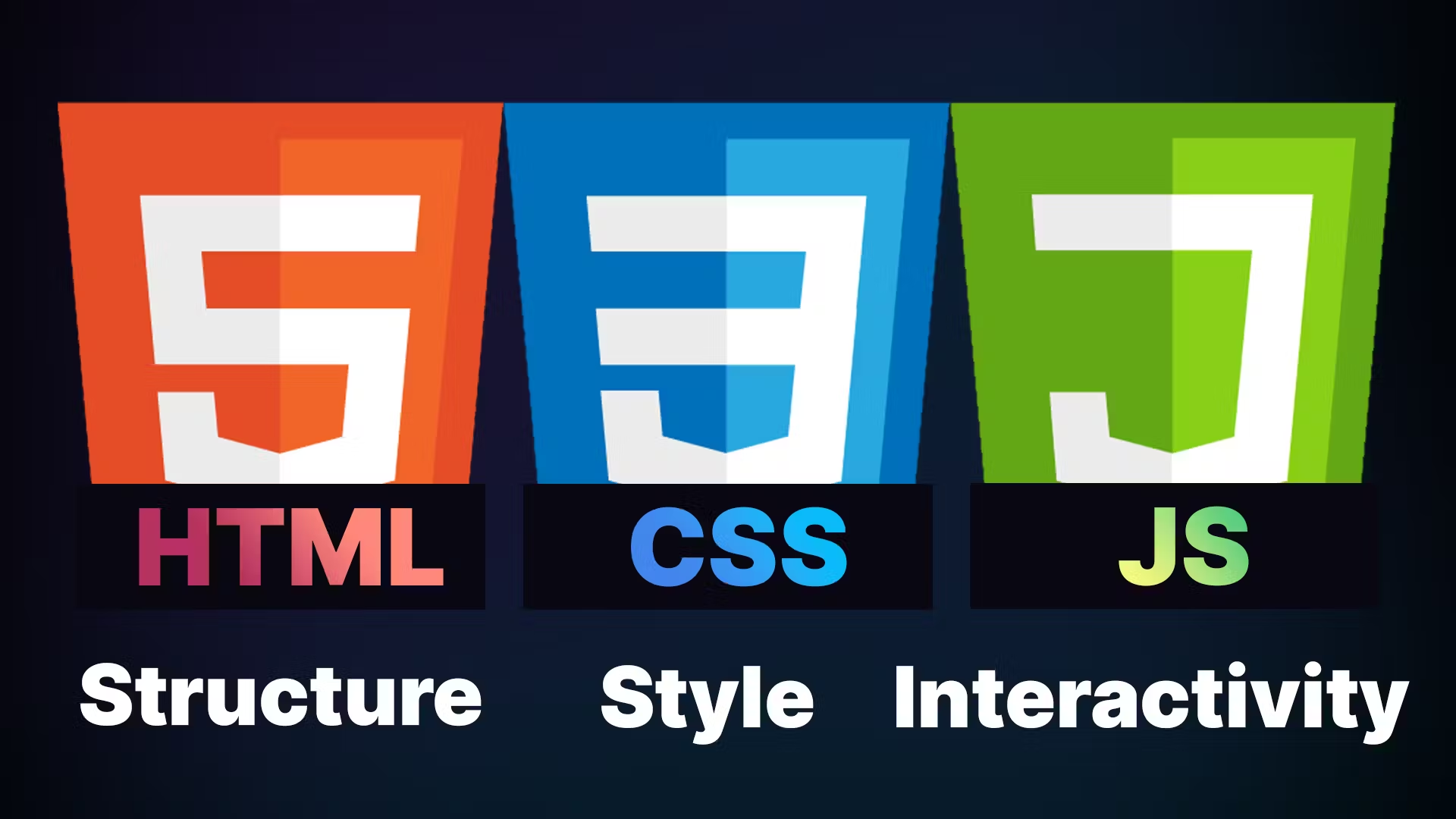
Any application you build, no matter what technology you use, is eventually transformed into these three languages and served to a user on a web page.
Hence it’s an important foundational piece of knowledge to understand the very basics of HTML and CSS first before diving into any “programming” (adding interactivity or logic to your application).
React - Building User Interfaces
If you’ve started building your project by this point, you’ve probably realised that it is difficult to build an application by writing HTML, CSS, and JS alone.
Developers have come up with many different libraries and frameworks to address these issues over the past decade; jQuery, Angular, Svelte, Vue… the list goes on!
One library has come out on top; React, which is:
-
The most used frontend JS framework of 2022.
-
The framework that most developers “want” to use in 2022.
-
The most in-demand frontend framework for landing a job (too lazy to get a source for this stat, so… “probably”
 ).
).
React uses a syntax called JSX to combine writing your UI structure and design with your “interactivity” in the same location:

Next.js - Making React WAY Better
I’ll save you a lot of struggle: completely skip Create React App (CRA) and arguably even Vite. Start by using Next.js right from the get-go.
Below is a great three-minute explainer of why CRA is no longer ideal for new projects using React:
Get Started with Next.js
Next.js documentation is absolutely brilliant. Lee Robinson and his team of DX engineers have written fantastic, interactive documentation to help you learn Next.js and quiz your knowledge along the way.For this reason, I recommend running through the interactive documentation first; and then diving into creating your first Next.js application with their CLI.
Blockchain Fundamentals
If you don’t already have knowledge of what a blockchain or smart contract is, a helpful resource for beginners is Patrick Collins’ blockchain course.
I suggest you watch the first 2 hours of the 32-hour course which introduces the core concepts of blockchain, smart contracts and web3. You can pick and choose the other areas of the course that interest you as you wish!
Understanding the Web3 Stack
An introductory video I recommend watching is “Defining the Web3 Stack”, by Nader Dabit; which outlines the equivalent web3 tech stack compared to a traditional “web2” application.
As an updated graphic to Nader’s talk in 2021, I have provided my thoughts on the tech stack of a web3 application below:
Building a full stack web3 app "the hard way"
Arguably the best resource I consumed when I was entering the web3 space was Nader Dabit's "Full Stack NFT Marketplace" video tutorial. You'll learn how to build almost every aspect of a full-stack web3 application at a rapid pace, including:-
NFT Collection smart contract
-
NFT marketplace smart contract
-
Smart contract development environment and testing
-
IPFS file uploads and downloads
-
Frontend technologies & Next.js to build a web3 application
-
RPC nodes and IPFS Gateways.
RPC Nodes
To communicate to and from the blockchain, you need to use a node. Unless you want to run your own Node, you need to use a service provider such as Alchemy, Coinbase, or Moralis, (or thirdweb as we’ll explain in the next section) to do so.
Below is a great resource outlining what an RPC Node is and why it’s required to build web3 applications: https://www.alchemy.com/overviews/rpc-node
Decentralized Storage Solutions
Not all information needs to be stored on the blockchain. Storing data on the blockchain itself costs gas fees and has a significant storage limit; for this reason, a common pattern is to store your information “off-chain” and store the URL of that data on the blockchain instead.
Storage solutions exist that aren’t stored “on-chain” but are still not controlled by a centralized service such as AWS or Google Cloud. The two prominent decentalized storage solutions solutions in 2023 are:
- IPFS
- Arweave
Indexing Solutions
Some web3 applications require information that isn’t directly available from any smart contract; such as what NFTs a wallet owns, or how many times an NFT has been transferred.
When it comes to indexing solutions, you can use The Graph; a decentralized solution, and again use Nader’s resources to learn how to get started:
You might prefer to use SDKs or API endpoints to get your indexed information, and there are a number of popular solutions you can use, each with helpful resources and videos on their documentation:
-
Alchemy
-
Coinbase Cloud
-
Moralis
These tools have similar capabilities with various pros and cons, you can use their documentation to explore which tool is right for you.
Smart Contracts
There are many resources you can use to learn Solidity itself, such as:
- CryptoZombies (interactive course)
- Learn Web3 (learnweb3.io)
- Literally, just read the Solidity documentation
Smart Contract Security
It is important to know the most common vulnerabilities of smart contracts, which again Patrick covers thoroughly in his 32-hour Solidity course in Chapter 18 at this timestamp.
Conclusion
That’s it! These are the resources I personally used to develop my knowledge in web3 and land a job as a developer relations engineer at thirdweb!
I’d like to reiterate that tutorials and resources alone will never be enough to become a dev. You need to get your hands dirty ASAP, come back to these resources as you run into problems in your project, and constantly fight battles on your own over many years to come.
The goal of this article isn’t to give you months of resources to consume, it’s here so you can come back to trusted sources of high-quality information as you build your own projects alone!
Source: https://blog.jarrodwatts.com/how-to-become-a-web3-developer-in-2023
Source: learnweb3.io
Source: cryptozombie.io -
-
NEWS AMBOSS UNVEILS LINER INDEX, BOLSTERING ENTERPRISE ADOPTION OF LIGHTNING NETWORK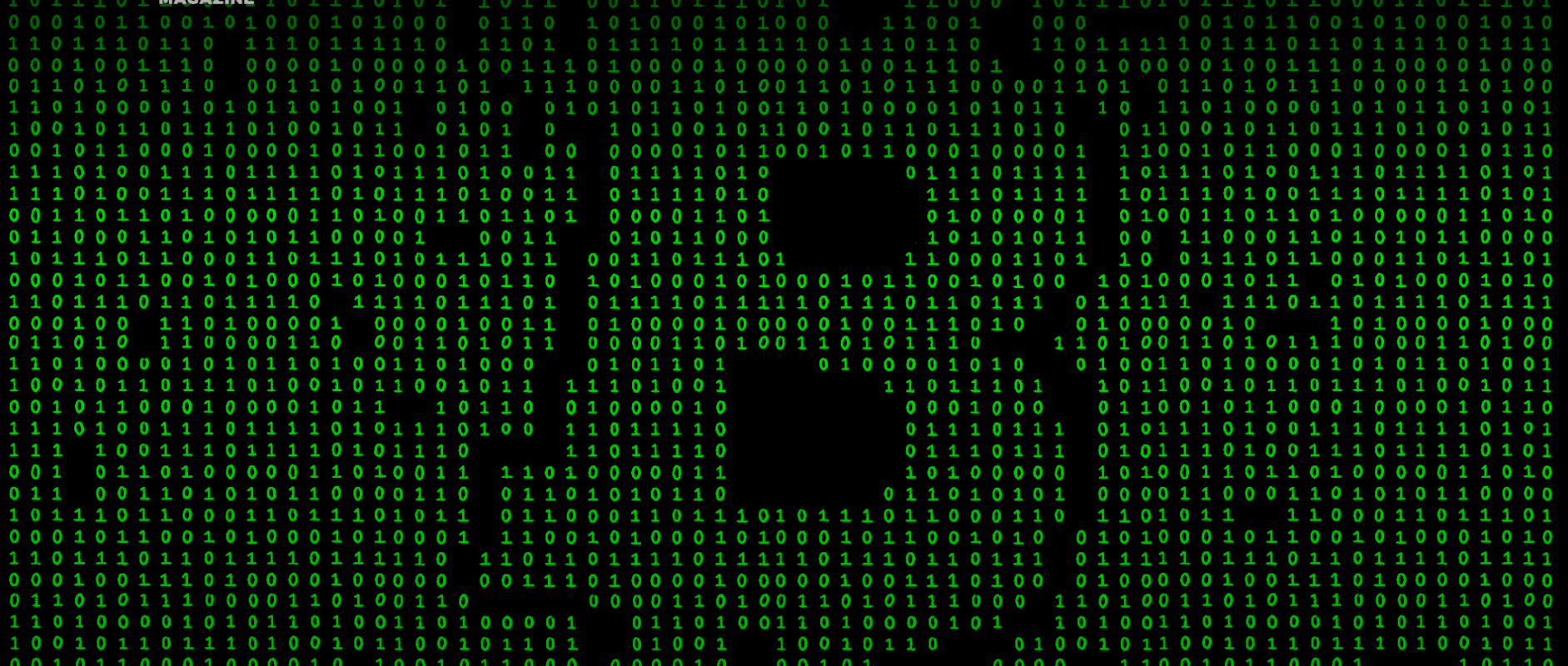
LINER, a new index by Amboss, measures Bitcoin yield and cost on the Lightning Network, attracting enterprises with low-risk opportunities.
Amboss, a data analytics provider for the Bitcoin Lightning Network (LN), has introduced LINER (Lightning Network Rate), an innovative index designed to measure bitcoin returns on the Lightning Network and showcase its potential for low-risk enterprise yield. According to a press release shared with Bitcoin Magazine, LINER serves as a benchmark interest rate for bitcoin without credit risk, similar to the traditional finance’s LIBOR (London Interbank Offered Rate). The index aims to provide an alternative to enterprises seeking exposure to bitcoin while avoiding the credit risk associated with CeFi yield platforms.
"By communicating real yield rates from bitcoin held on the LN, enterprises will recognize the strategic error in trusting CeFi yield platforms while capturing the benefits of payment network disruption that is decades overdue,” said Jesse Shrader, co-founder and CEO of Amboss. Nik Bhatia, creator of The Bitcoin Layer, praised LINER as a first-of-its-kind reference rate derived from the Lightning Network, contributing to the establishment of unmanipulated money markets independent of a central authority.
Allen Farrington, a Bitcoin writer and investor, acknowledged the value of a reference rate like LINER for assessing the true cost of capital, highlighting the Lightning Network’s growth as a self-sustaining financial ecosystem for both retail and enterprise needs.
Amboss also operates Magma, a marketplace facilitating the buying and selling of Lightning channels, enabling bitcoin holders to earn BTC from opening Lightning channels to various destinations. “Since Lightning channels are self-custodial ways to hold bitcoin, Magma enables novel bitcoin yield without custodial risk, avoiding the pitfalls of failed CeFi yield platforms like Celsius and BlockFi,” the press release stated.
LINER comprises two insightful metrics: LINER Cost and LINER Yield, which provide enterprises with valuable insights into the lightning market. These metrics allow for comparisons between LINER Cost and traditional payment card fees, empowering large bitcoin holders to make informed decisions regarding their bitcoin holdings.
Jonathan Bier, an author and investor, noted the potential future significance of the LINER index as a reference rate for Bitcoin-based investment decisions. The introduction of LINER opens up possibilities for portfolio managers, investors and businesses to leverage the index in their decision-making processes.
With LINER, Amboss aims to encourage enterprise adoption of the Lightning Network by demonstrating the cost savings and low-risk yield potential offered by Lightning-enabled payment infrastructure. The index provides a clear incentive for large bitcoin holders to utilize self-custodial strategies and earn higher returns while minimizing risk. To access more information about Amboss and LINER, interested parties can check out the overview and https://amboss.space/stats/liner.
Reference: https://bitcoinmagazine.com/business/amboss-unveils-liner-index-for-enterprise-lightning-adoption
-
Blockchain Roadmap - Step by step guide to becoming a blockchain developer in 2023Reference: https://roadmap.sh/blockchain
-
Smart contract environment Filecoin Virtual Machine launches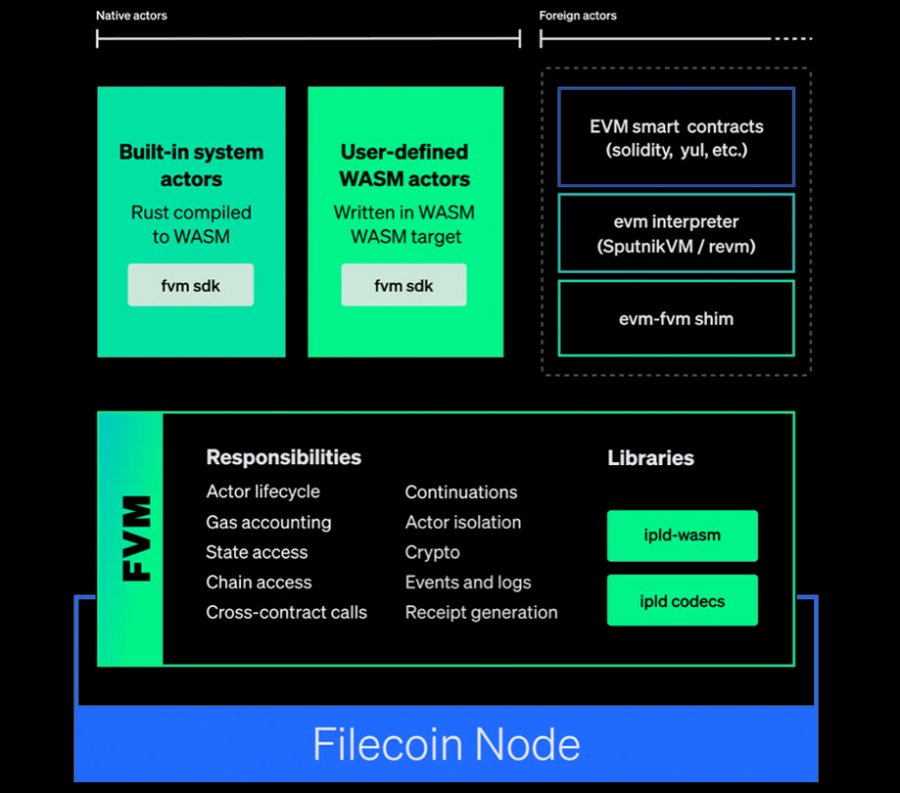
Filecoin Virtual Machine (FVM), an execution environment for smart contracts on the Filecoin network, is now live on the Filecoin mainnet. The FVM launch adds smart contracts and user programmability to the Filecoin blockchain, unlocking the enormous potential of an open data economy.
With FVM, developers can write and deploy custom code to run on the Filecoin blockchain, allowing them to connect, augment, and innovate around the building blocks of the Filecoin economy: storage, retrieval, and computation of content-addressed data at scale. This represents a major advancement in the capabilities of decentralized storage.
Filecoin Virtual Machine (FVM) launches to revolutionize smart contracts, and decentralized computing, and unlock the potential of an open data economy
FVM’s new features will significantly increase the utility and value of the Filecoin network, a unique economy of 3800+ storage provider systems worldwide. Together, these systems contribute over 13 EiB of storage capacity to the network, secure hundreds of TiB of client data with more than 130M FIL locked of collateral, and earn block rewards and income from storage deals.
Today’s introduction of the FVM is part of Filecoin’s larger roadmap, which aims to democratize the services of today’s centralized cloud into open-access markets.
“FVM is a major step forward for blockchains and Web3, it enables developers to build new kinds of applications, bringing the powers of smart contracts to large-scale data,” said Juan Benet, CEO and founder of Protocol Labs.
FVM creates boundless opportunities, ranging from Data DAOs, perpetual storage, decentralized finance (DeFi), and Layer 2 networks, such as reputation systems, incentive-aligned content delivery networks, and more. FVM will empower builders to create entirely new categories of custom apps, markets, and organizations built around data stored on Filecoin. These include:
- Data Onboarding and Management: FVM provides the building blocks for new models of data management, such as automating storage deals to preserve data forever, establish data DAOs, or verify data integrity.
- Network Participant Discovery and Reputation: FVM storage provider reputation services or data retrievability oracles that create differentiation opportunities and enhance the reliability of the decentralized cloud.
- Decentralized Finance and other services to provide access to collateral for the storage providers offering services on the network and to create new opportunities for token holders to participate more actively in the Filecoin economy.
- Data Curation: Tools facilitating the collective creation, curation, and monetization of valuable datasets.
- Cross-chain Interoperability and Integration: For example, cross-chain bridges integrate with other economies or NFT standards with built-in storage guarantees.
The FVM launch brings additional integrations and support from leading Web3 platforms, including:
-
Sushi is one of the most widely used decentralized cryptocurrency exchanges, with support for 10+ blockchains and thousands of tokens. With its FVM integration, users can easily perform automated swaps between FIL and thousands of other tokens, including wUSDC, wBTC, and wETH.
-
Brave, the privacy-focused browser with over 54M monthly active users, is adding FVM support to its native wallet. Brave Wallets can now be used to authenticate or transact with FVM-powered apps through the Brave browser.
-
Celer is a zero-fee cross-chain interface that brings token and arbitrary message exchange to Filecoin, connecting it with 43 chains.
-
Axelar brings secure interchain communication to Filecoin. Using Axelar’s General Message Passing, dApps can now integrate FVM services, such as perpetual storage contracts, giving users one-click access to decentralized data across 30+ chains, spanning Cosmos, Binance, and Ethereum ecosystems.
“We’re thrilled to integrate with FVM and leverage its powerful smart contract capabilities to enhance the user experience on Sushiswap. With FVM, we can unlock new frontiers for decentralized finance and offer our users even more innovative and efficient solutions. We’re excited to continue collaborating with the Filecoin team and building the future of Web3 together.” said Jared Grey, CEO of Sushi.
“We are excited to build upon Brave’s existing support for Filecoin and IPFS with the launch of FVM, offering more ways to build and interact with the decentralized Web,” said Brian Bondy, co-founder and CTO of Brave.
“The Axelar-Filecoin integration is one of the first use cases of interoperability that enables the composition of chains with different properties. For instance, DeFi across blockchains will be composable with decentralized storage, regardless of where they choose to build,” said Sergey Gorbunov, co-founder of Axelar.
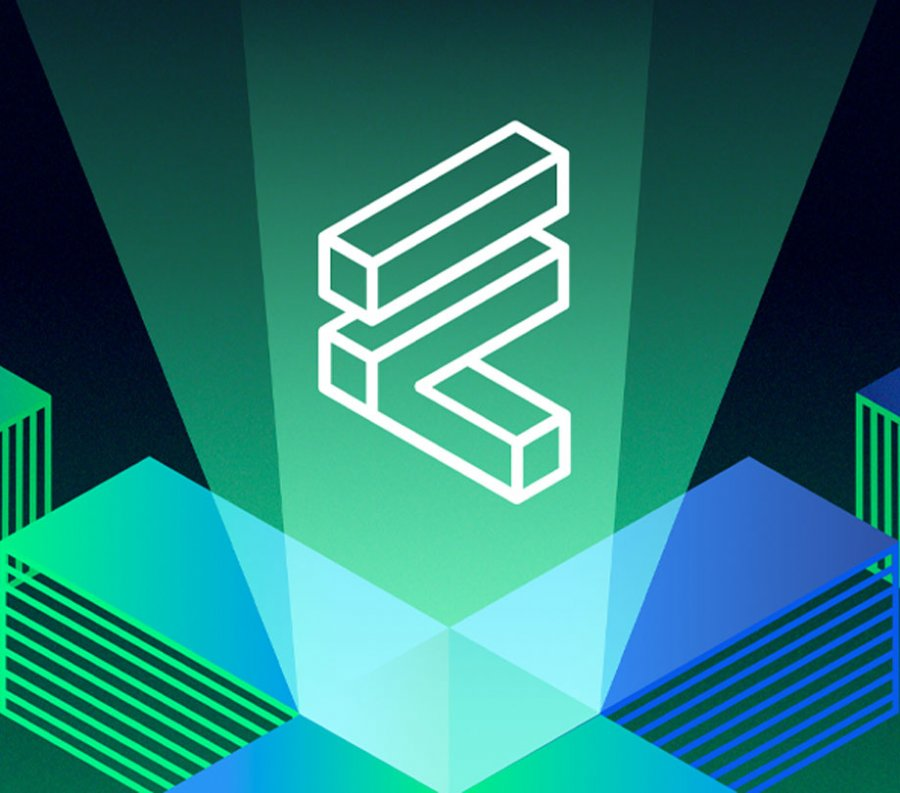
Over 150 applications are building with FVM's perpetual storage and other capabilities on the Hyperspace testnet, with plans to deploy to Mainnet. These include:
- Ocean is launching the first data marketplace on FVM, allowing individuals to make their curated datasets available for others to access. This platform offers a unique opportunity for data providers to reach a broader audience and share their valuable data with others who can benefit from it.
- NFT.Storage is a leading storage service with over 100M NFTs stored on Filecoin and preserved for public access. Now with FVM, those NFTs will be perpetually stored with automatically-renewing storage deals.
- Waterlily is an AI-powered art bot that sends token rewards to the original artists, tackling the attribution and payments challenges important to ethical AI. It’s built with Bacalhau’s Lilypad, a bridge between on-chain and off-chain computing that lets you run decentralized compute jobs from FVM smart contracts.
-
What is Web5?Oh! Web5 is very new :))
-
Blockchain Technology Explained: A Decentralized EcosystemChapter-1: What Is Blockchain Technology?
Let’s start with the most basic question of all time – “What is definition of blockchain technology?” Well, blockchain technology is a distributed ledger system that promotes decentralization, transparency, and data integrity.
Does it seem confusing?
Let me explain blockchain technology in a simple way. Imagine multiple blocks that are connected in a chain-like a format. Here, all the blocks will be linked to the previous block and the block in front of it.
Moreover, all the blocks in that chain contain some form of data, and the chain represents the linking structure. In reality, every single block will link using the cryptography. Moreover, all the blocks in that chain will have a cryptographic hash ID along with transactional data and timestamps.
And so you end with a growing chain of blocks, and that is my friend what a blockchain is. You could think of it as a database that stores information in a unique way. But blockchain and databases are practically quite different in nature even though they both store information.
By default, blockchain technology does not support any modification of the data. So, any data that would go in the block can never get deleted or altered. Thus, it will stay there forever. Another significant fact about blockchain technology explained is that the network is a peer-to-peer network.
So, there is no centralized connection lurking in the shadows trying to steal your information. I mean, who wouldn’t like this much freedom, right?
Blockchain Technology Explained: How Does It Work?
Well, it’s time for you to know how the tech actually works in this blockchain guide. But before we begin, take a look at some of the important features to know about beforehand.Blockchain stored all the information in a ledger system. Moreover, any kind of data exchanges is called “transactions.” Previously blockchain was only meant for transacting digital currencies, but now it can even use other forms of data as well.
Every single user on the network is called “nodes,” and they get a copy of the updated ledger. Moreover, every node has a different way of communicating with each other. The system varies from blockchain to blockchain.
Now let’s begin the explanation of blockchain technology!
First of all, a user will request for a transaction in the network. Here, he/she will get two keys – public and private. But the user can only transact using the private key. And to find the other person you are sending money to you will need their public key.
Anyhow, after the request a block with all the information of the transaction gets created. In reality, everything in the block is encrypted to promote security.
Once it’s created, it will be broadcasted to all the nodes in the network. In blockchain technology explained you need verification from other nodes that what you claimed is valid. And so the other nodes use a consensus algorithm (I’ll explain what it is a bit later) to validate the information.
Once your block gets validated, the block will get a spot on the chain. At the same time, the transaction you did will be executed as well.
Understanding how it works doesn’t seem that much difficult now, does it?
Reference: https://101blockchains.com/blockchain-technology-explained/
-
The Cosmos We’ve All Been Waiting For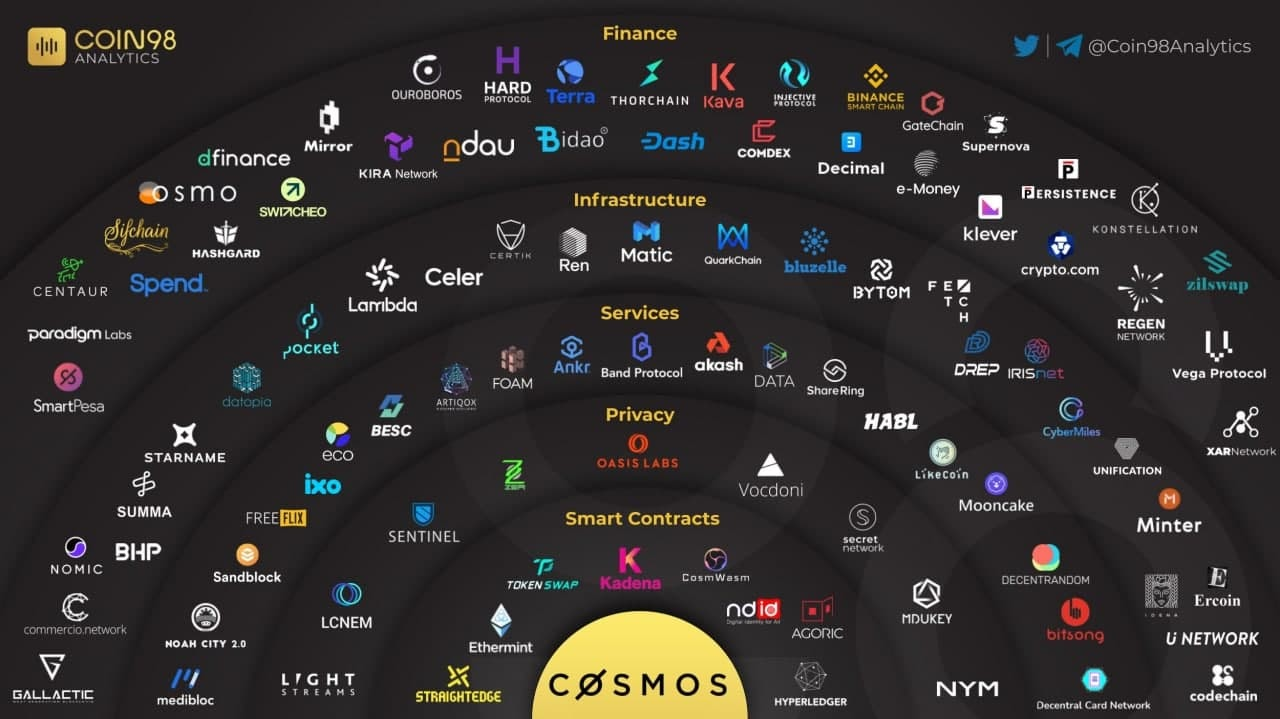
In 2023, one of the oldest blockchain ecosystems will begin to deliver on its original promise at the scale many have hoped for.Ethereum introduced the initial concept of smart contracts and, as such, has had a big head start against rival blockchains, being the most developed DeFi ecosystem. However, other blockchains have been taking back market share, each coming forth with its own unique value propositions and use cases in an attempt to build community and, in turn, attract developers and users.
One such blockchain is Cosmos, where Comdex exists. For those new to Cosmos, it can be thought of as an ecosystem of interconnected blockchains, like a hub-and-spoke, with Cosmos Hub at the center.
Applications on Ethereum benefit from its Proof-of-Stake security but suffer from certain trade-offs, such as less potential for project-specific customization and less interoperability with other blockchains. With Cosmos, each application can be its own unique Proof-of-Stake blockchain, opening up the potential for an internet of custom-purpose blockchains in the future.
Despite having a very strong developer ecosystem, Cosmos DeFi itself has, to date, lagged behind other blockchains, in part due to a lack of available stablecoins. This is changing with the announcement of native USDC coming to Cosmos and the rise in crypto-collateralized stablecoins, covered in detail here.
There are several reasons why Cosmos is well-suited for a strong DeFi ecosystem
These include:- Throughput: as each Cosmos application is its own blockchain, they are unaffected by the network congestion as is common with Ethereum.
- Customizability: blockchain functionality and validator sets can be custom-purposed depending on individual needs. For example, dYdX will have its custom validator set to manage transactions off-chain in order to reduce network congestion.
- Control: projects may build vertically, horizontally, or however they see fit. Teams might wish to make their own core technological changes or introduce a new feature.
- Interoperability: as more projects build upon Cosmos, network effects grow. Each blockchain will be able to communicate seamlessly and securely with one another using the Inter-Blockchain Communication (IBC) protocol.
- Gas Fees: gas fees are now paid in the native token of the protocol, meaning that value accrues to their token rather than to another blockchain network such as Ethereum.
dYdX’s recent move over to Cosmos has also gained widespread attention, and if successful, may lead to others following suit. All in all, as stablecoins become more widely available within Cosmos and more projects begin to see the benefits of building there, the future may be well-poised for future growth.
The Path Forward for Cosmos DeFi
Our goal is to democratize finance by building an infrastructure layer optimized for aggregating cross-chain liquidity with a suite of cutting-edge DeFi products. The primary means of doing this is by providing modules built on the core primitives of finance, allowing builders to utilize them to launch DeFi applications.
Builders can now benefit from Comdex’s customizable modules, whether that be primitives for functionalities such as liquidations, lending, oracles, vaults, assets, or much more. This will be extremely relevant as more and more projects come to Cosmos in the future, requiring reliable and customizable infrastructure that’s interoperable with the rest of the Cosmos ecosystem.
On the consumer side, Comdex is building out a suite of services such as:
- CMST: our crypto collateralized stablecoin, mintable through Harbor Protocol.
- C-Swap: our decentralized exchange.
- Commodo: our borrowing and lending market.
Ethereum projects including Curve, Aave, and Frax have been racing to provide all three of the above solutions. For example, Curve is introducing its own stablecoin, while Frax has introduced its own AMM and borrowing/lending market.
Comdex already has all of the above, which can be used by other projects wishing to deploy. With the Comdex chain, builders have access to a stack of modules that allow smoother go-to-market for any dApp launching in Cosmos. The Comdex chain, therefore, acts as the de facto infrastructure layer of interchain DeFi.
About Siddarth Patil
Comdex Co-founder and COO. Before co-founding Comdex, Siddarth’s professional endeavors centered on finance, with working experience in wealth management and investment banking. He began building Comdex in 2018 as a blockchain-based solution to digitize the commodity supply chain industry. Along with the Comdex team, Siddarth launched Comdex chain in 2021 as a DeFi infrastructure layer to power a multi-chain ecosystem.
About Comdex
A DeFi infrastructure layer for the Cosmos ecosystem. A layer-1 infrastructure for seamless deployment of DeFi applications in the Cosmos ecosystem, powering DeFi in the multi-chain future.The Comdex chain is built to enable the bridging of capital to assets across the DeFi and CeFi ecosystems. A truly decentralized ecosystem of solutions enables limitless access to global liquidity in finance.
Comdex aims to deliver a robust infrastructure layer that supports the seamless creation and deployment of DeFi applications in the Cosmos ecosystem. The Comdex chain enhances investors’ access to a broad range of assets that help investors diversify and generate yield on their investments.
Srouce: https://hackernoon.com/the-cosmos-weve-all-been-waiting-for
Source: Coin98 analytics -
[Book Review] Exploring the Radical Vision of Ethereum: A Review of "Proof of Stake: The Making of Ethereum and the Philosophy of BlockchainsI have learned many things from this book and Vitalik buterin is a genius
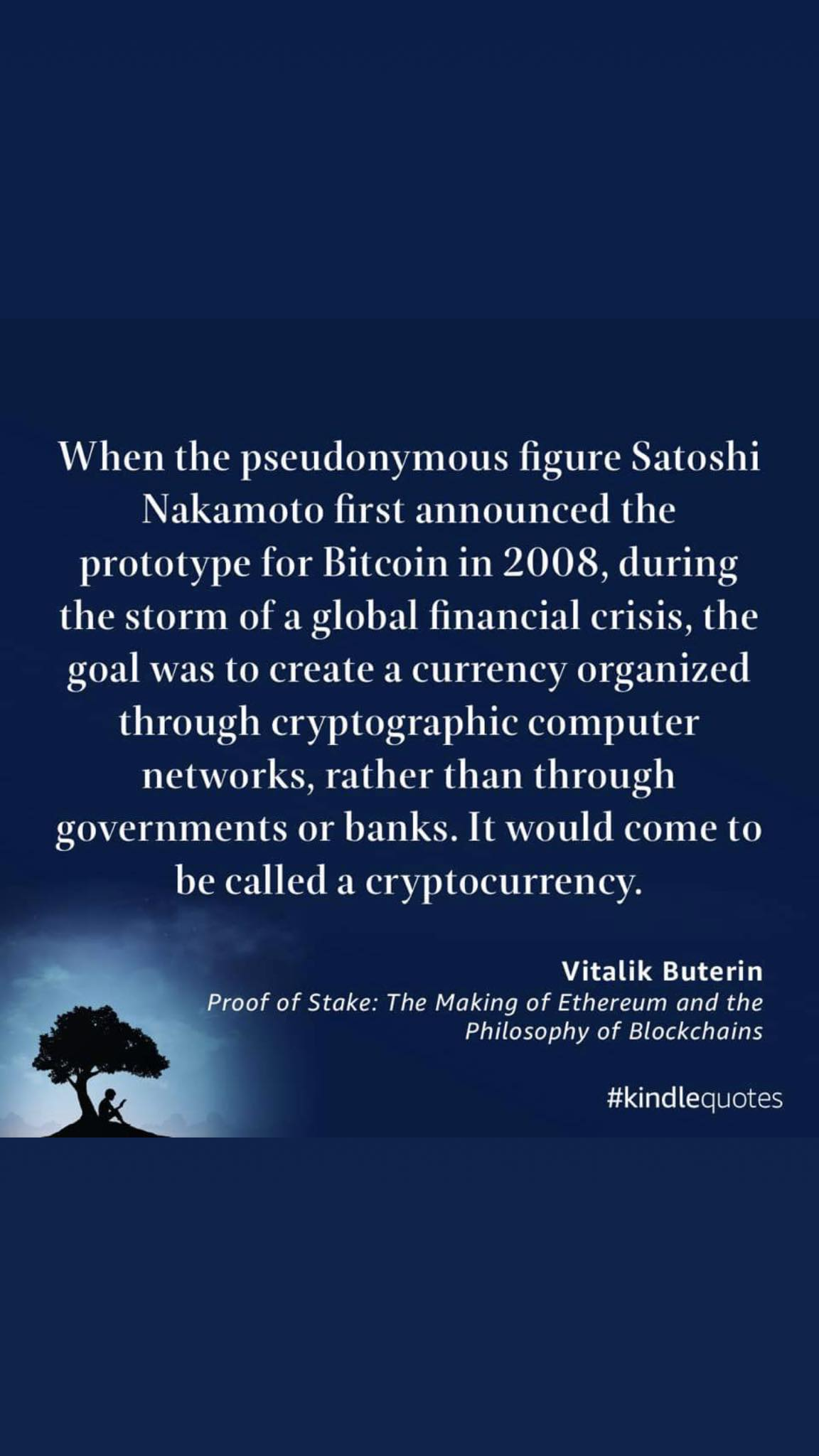
-
Cosmos-Based Defi Protocol Nolus Raises 2.5M to Build the First Cross-Chain Defi Lease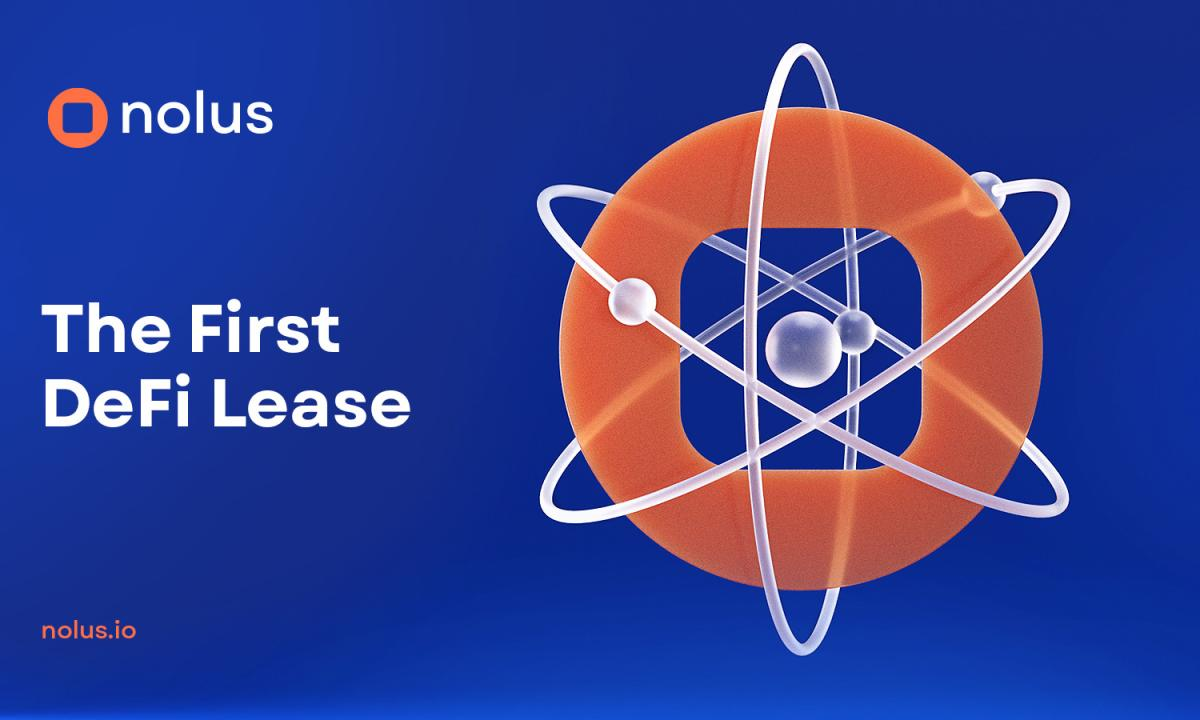
George Town, BVI, May 2nd, 2023, Chainwire
The Nolus DeFi Lease provides up to 150% financing on the initial investment with a lowered margin call risk and access to the underlying leveraged assets.
Nolus, an interoperable application on Cosmos, has secured $2.5 million in pre-seed and seed funding to tackle inefficiencies in DeFi money markets.The recently concluded $20 million valuation seed funding is backed by Dorahacks, Everstake, Cogitent Ventures, Token Metrics Ventures, and Autonomy Capital, among others, and will allow Nolus to fully complete the technological backbone and further expand the platform both within and outside the Cosmos ecosystem. The Advisory Board members Zaki Manian, Strangelove, and Shane Molidor will ensure Nolus solidify its cross-chain presence.
The novel DeFi Lease solution by Nolus unlocks the full potential of crypto money markets by reducing the industry’s steep over-collateralization requirements, resulting in significantly improved capital efficiency and much more favorable lending options for users. The Nolus DeFi Lease provides up to 150% financing on the initial investment with a lowered margin call risk and access to the underlying leveraged assets through whitelisted yield-bearing strategies. With the added support of liquid staking derivatives, the Nolus protocol will create a cornerstone use case for LSDs for the Cosmos ecosystem in the form of self-repaying loans.
About Nolus
Nolus defines a money market between lenders looking to earn yield on deposited stablecoins and borrowers looking to amplify holdings with more assets than their current equity at lower risk and retained ownership.
The Protocol utilizes a semi-permissioned PoS blockchain built using the Cosmos SDK and a WASM smart contract engine that executes in an isolated sandbox model focused on interoperability, security and performance. Interoperability itself is at the core of Nolus’ offering as the Protocol utilizes IBC and Interchain Accounts to tap into a diverse set of liquidity hubs without creating fragmentation across chains.
After months of testing, Nolus will open its public mainnet in May.
-
History of Blockchain: 1991 to 2023 - Part 1 (1991 – 2012)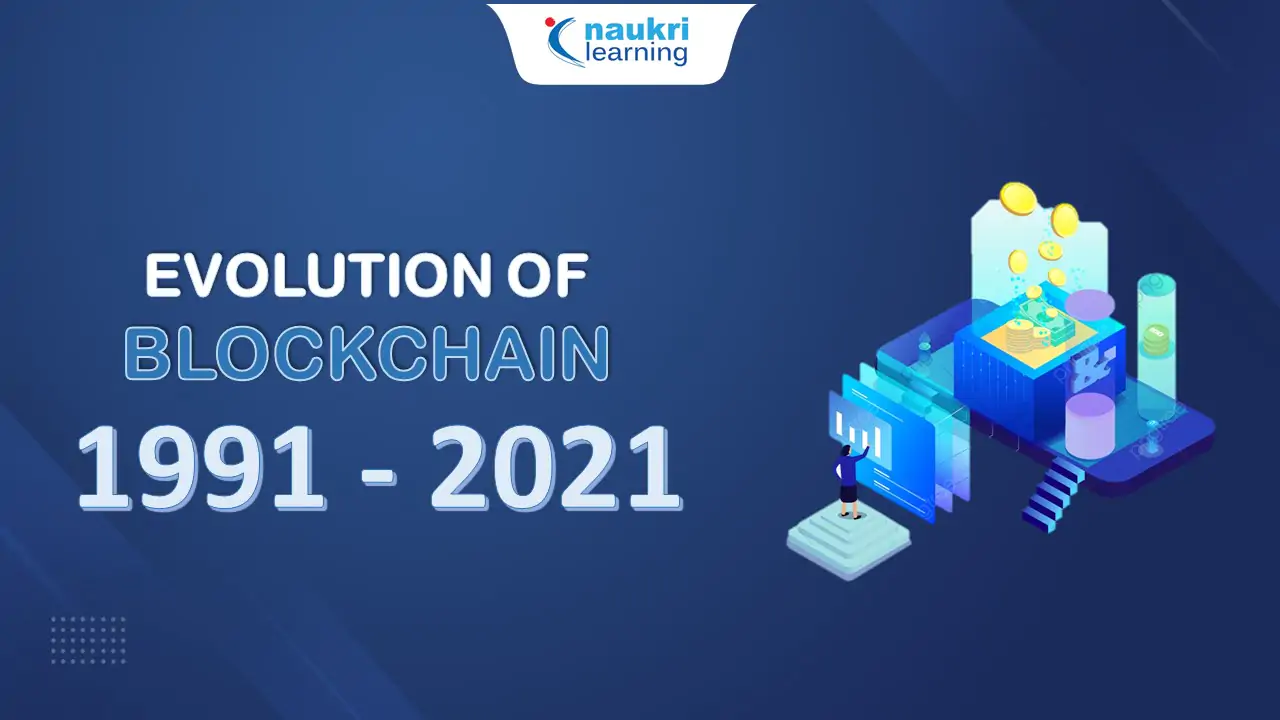
Blockchain Technology is in the limelight for the last few years. And it continues to grab the attention of many. Meanwhile, this article goes through the evolution of Blockchain from 1991 to the Present. It constitutes a timeline divided into three broader categories. Early inception stage, mid struggle stage, and the present stage of acceptance.
The Inception of Blockchain (1991 – 2008)
First, the below section covers the early-stage evolution of Blockchain from 1991 to 2008.1991
The evolution of Blockchain technology started in 1991. When research scientists Stuart Haber and W. Scott Stornetta were working on a practical solution to keep the backup of digital documents. Afterward, they aim to make the timestamps of those documents more secure. Later, they published their first paper expressing the use of a chain to cryptographically secure blocks in order to protect the integrity of past information.
1992
In 1992, they added the concept of Merkle trees. It helps to collect more documents in a single block. Thus, increasing the model’s efficiency. In 1993, Proof-of-Work (PoW) mechanism was proposed to protect against spam and other network abuses.2004
In 2004 Hal Finney, a computer scientist and cryptography expert developed a system known as RPoW (Reusable Proof of Work). The system creates a transferrable RSA-signed token by receiving a non-exchangeable (or non-fungible) hash cash based on a proof-of-work (PoW) token. Above all, the protocol solved the double-spending problem. Therefore, keeping the ownership of RSA tokens registered on the trusted server. Where other nodes can verify and keep the documents integrated.2008
Then in late 2008, a whitepaper came up named “Bitcoin: Peer-to-Peer E-cash system” by anonymous Satoshi Nakamoto. He used a hash cash PoW (Proof-of-Work) algorithm with software-based computing functions. Unlike, RPoW which uses hardware functionalities. Moreover, bitcoin introduces the concept of mining coins. It also ensures verifying the transactions among the decentralized nodes in the network.2009
Bitcoins are mined for a reward using the PoW algorithm by individual miners. Further, it is verified by the other decentralized nodes in the chain network.On Jan 3, 2009, the foundation of bitcoin settled. The first bitcoin block was mined by Satoshi Nakamoto with a reward of 50 bitcoins. Moreover, the first mined block is we call the “Genesis block of Bitcoin” today.
On Jan 12, 2009, the first transaction of 10 bitcoins from Satoshi to Hal Finny happened.
On Oct 31, 2009, the Bitcoin exchange marketplace launched publicly to trade bitcoins for actual money.
Furthermore, Nakamoto established the Bitcoin Talk Forum to broadcast news and information. Since 2009, the value of Bitcoin has aggressively grown. By 2012, Bitcoin reached $250 as its worth.Above all, Nakamoto set up the system limit up to 21 million bitcoins. Currently, more than 18 million bitcoins have already been mined. Moreover, depending on the present computation resources and rate of mining, by the year 2140, all bitcoins will be mined.
However, the person or community behind this popular discovery is still unknown. The figure of Satoshi Nakamoto disappeared and passed the wisdom of their knowledge to the generation of computer scientists and developers. Ever since then we have been hearing and reading about inventions of new blockchain-based applications worldwide.
Let’s conclude the early evolution of the Blockchain era with the diagram below.
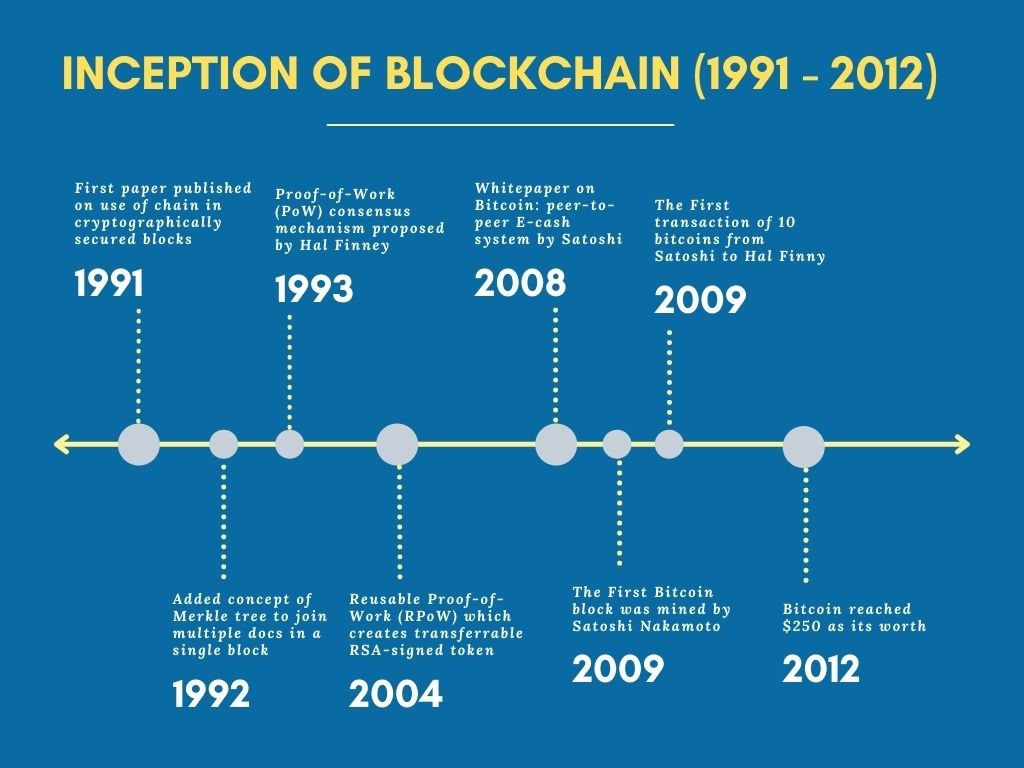
Ref: https://www.shiksha.com/online-courses/articles/evolution-of-blockchain-technology/
-
Learn Solidity, Blockchain Development, & Smart Contracts | Powered By AI - Full Course - Patrick CollinsWhat you learn ?
This course will give you a full introduction into all of the core concepts related to blockchain, smart contracts, Solidity, ERC20s, full-stack Web3 dapps, decentralized finance (DeFi), Chainlink, Ethereum, upgradable smart contracts, DAOs, aave, IPFS, and more. Follow along with the videos and you'll be a blockchain wizard in no time!Learn Solidity, Blockchain Development, & Smart Contracts | Powered By AI - Full Course (0 - 6)
 ️ (0:00:00) | Lesson 0 | Welcome to the Course
️ (0:00:00) | Lesson 0 | Welcome to the Course
 ️ (0:13:54) | Lesson 1 | Blockchain Basics
️ (0:13:54) | Lesson 1 | Blockchain Basics
 ️ (2:10:42) | Lesson 2 | Welcome to Remix - Simple Storage
️ (2:10:42) | Lesson 2 | Welcome to Remix - Simple Storage
 ️ (3:29:58) | Lesson 3 | Storage Factory
️ (3:29:58) | Lesson 3 | Storage Factory
 ️ (4:09:08) | Lesson 4 | Fund Me
️ (4:09:08) | Lesson 4 | Fund Me
 ️ (6:00:00) | Lesson 5 | AI Prompting
️ (6:00:00) | Lesson 5 | AI Prompting
 ️ (6:22:58) | Lesson 6 | Foundry Simple Storage
️ (6:22:58) | Lesson 6 | Foundry Simple StorageLearn Solidity, Blockchain Development, & Smart Contracts | Powered By AI - Full Course (7 - 11)
 ️ (0:00:00) | Lesson 7: Foundry Fund Me
️ (0:00:00) | Lesson 7: Foundry Fund Me
 ️ (2:37:02) | Lesson 8: HTML Fund Me
️ (2:37:02) | Lesson 8: HTML Fund Me
 ️ (3:04:09) | Lesson 9: Smart Contract Lottery
️ (3:04:09) | Lesson 9: Smart Contract Lottery
 ️ (7:08:04) | Lesson 10: ERC20s
️ (7:08:04) | Lesson 10: ERC20s
 ️ (7:40:56) | Lesson 11: NFTs
️ (7:40:56) | Lesson 11: NFTsLearn Solidity, Blockchain Development, & Smart Contracts | Powered By AI - Full Course (12-15)
 ️ (0:00:00) | Lesson 12 | DeFi Stablecoin
️ (0:00:00) | Lesson 12 | DeFi Stablecoin
 ️ (4:47:00) | Lesson 13 | Upgradable Contracts & Proxies
️ (4:47:00) | Lesson 13 | Upgradable Contracts & Proxies
 ️ (6:05:45) | Lesson 14 | DAOs & Governance
️ (6:05:45) | Lesson 14 | DAOs & Governance
 ️ (7:21:12) | Lesson 15 | Security & Auditing
️ (7:21:12) | Lesson 15 | Security & Auditing -
JavaScript's Memory Management ExplainedEven though the JavaScript engine manages memory for us, it’s good to know what happens under the hood
Most of the time, you can probably get by fine not knowing anything about memory management as a JavaScript developer. Afterall, the JavaScript engine handles this for you.
At one point or another, though, you’ll encounter problems, like memory leaks, that you can only solve if you know how memory allocation works.
In this article, I’ll introduce you to how memory allocation and garbage collection works and how you can avoid some common memory leaks
Memory life cycle
In JavaScript, when we create variables, functions, or anything you can think of, the JS engine allocates memory for this and releases it once it’s not needed anymore.
Allocating memory is the process of reserving space in memory, while releasing memory frees up space, ready to be used for another purpose.
Every time we assign a variable or create a function, the memory for that always goes through the same following stages:
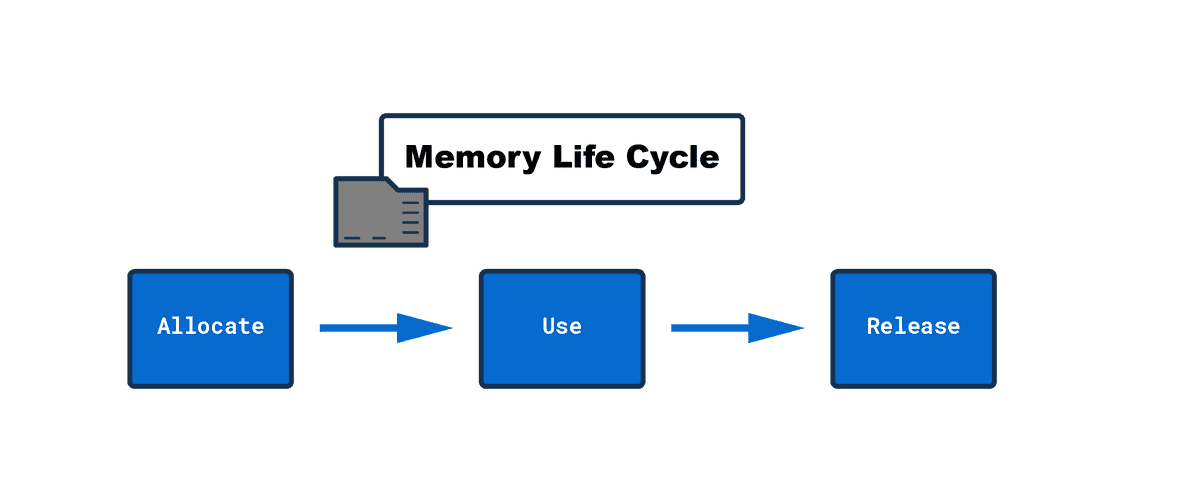
Allocate memoryJavaScript takes care of this for us: It allocates the memory that we will need for the object we created.
Use memoryUsing memory is something we do explicitly in our code: Reading and writing to memory is nothing else than reading or writing from or to a variable.
Release memoryThis step is handled as well by the JavaScript engine. Once the allocated memory is released, it can be used for a new purpose
The memory heap and stack
We now know that for everything we define in JavaScript, the engine allocates memory and frees it up once we don’t need it anymore.
The next question that came to my mind was: Where is this going to be stored?
JavaScript engines have two places where they can store data: The memory heap and stack.
Heaps and stacks are two data structures that the engine uses for different purposes.
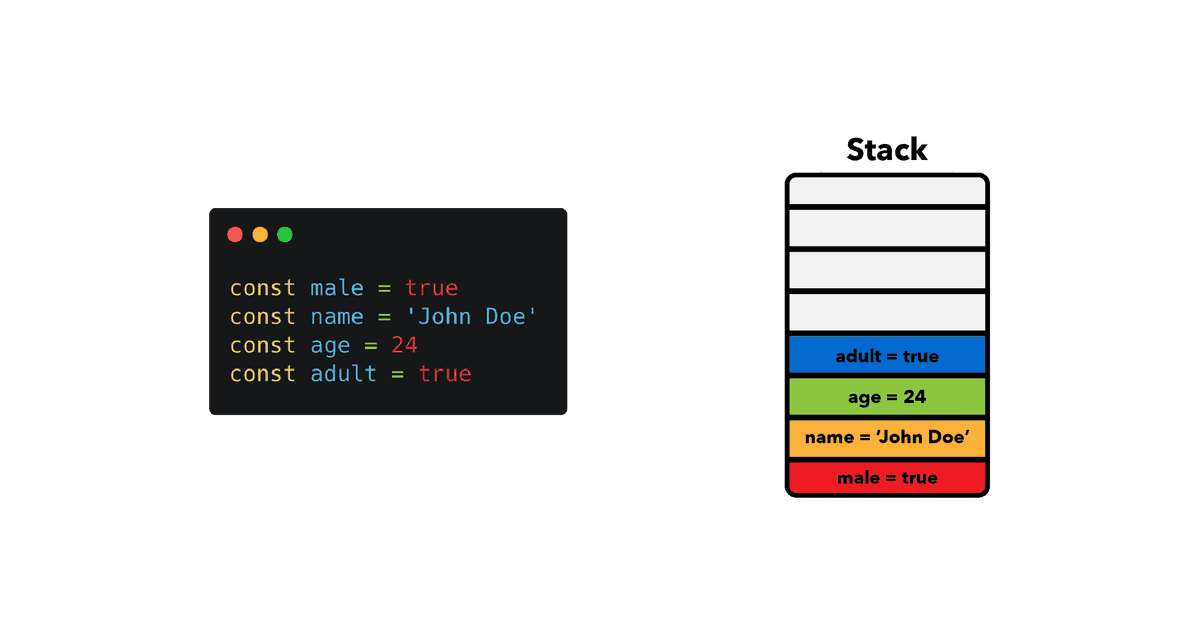
A stack is a data structure that JavaScript uses to store static data. Static data is data where the engine knows the size at compile time. In JavaScript, this includes primitive values (strings, numbers, booleans, undefined, and null) and references, which point to objects and functions.
Since the engine knows that the size won’t change, it will allocate a fixed amount of memory for each value.
The process of allocating memory right before execution is known as static memory allocation.
Because the engine allocates a fixed amount of memory for these values, there is a limit to how large primitive values can be.
The limits of these values and the entire stack vary depending on the browser.
Heap: Dynamic memory allocation
The heap is a different space for storing data where JavaScript stores objects and functions.
Unlike the stack, the engine doesn’t allocate a fixed amount of memory for these objects. Instead, more space will be allocated as needed.
Allocating memory this way is also called dynamic memory allocation.
To get an overview, here are the features of the two storages compared side by side

Examples
const person = { name: 'John', age: 24, };JS allocates memory for this object in the heap. The actual values are still primitive, which is why they are stored in the stack.
const hobbies = ['hiking', 'reading'];Arrays are objects as well, which is why they are stored in the heap.
let name = 'John'; // allocates memory for a string const age = 24; // allocates memory for a number name = 'John Doe'; // allocates memory for a new string const firstName = name.slice(0,4); // allocates memory for a new stringPrimitive values are immutable, which means that instead of changing the original value, JavaScript creates a new one
References in JavaScript
All variables first point to the stack. In case it’s a non-primitive value, the stack contains a reference to the object in the heap.
The memory of the heap is not ordered in any particular way, which is why we need to keep a reference to it in the stack. You can think of references as addresses and the objects in the heap as houses that these addresses belong to
Note: Remember that JavaScript stores objects and functions in the heap. Primitive values and references are stored in the stack.
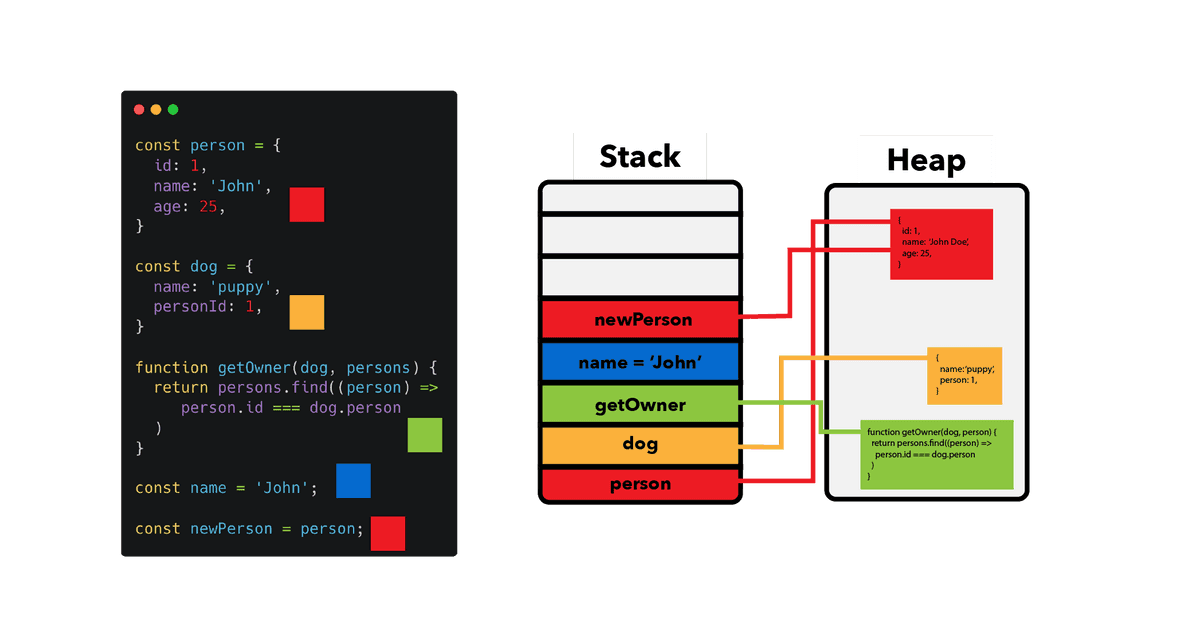
In this picture, we can observe how different values are stored. Note how person and newPerson both point to the same object.
Ref: Memory Management - MDN Web Docs
Ref: https://felixgerschau.com/javascript-memory-management/

